TODAY
2019: THE YEAR OF LASALLIAN VOCATIONS


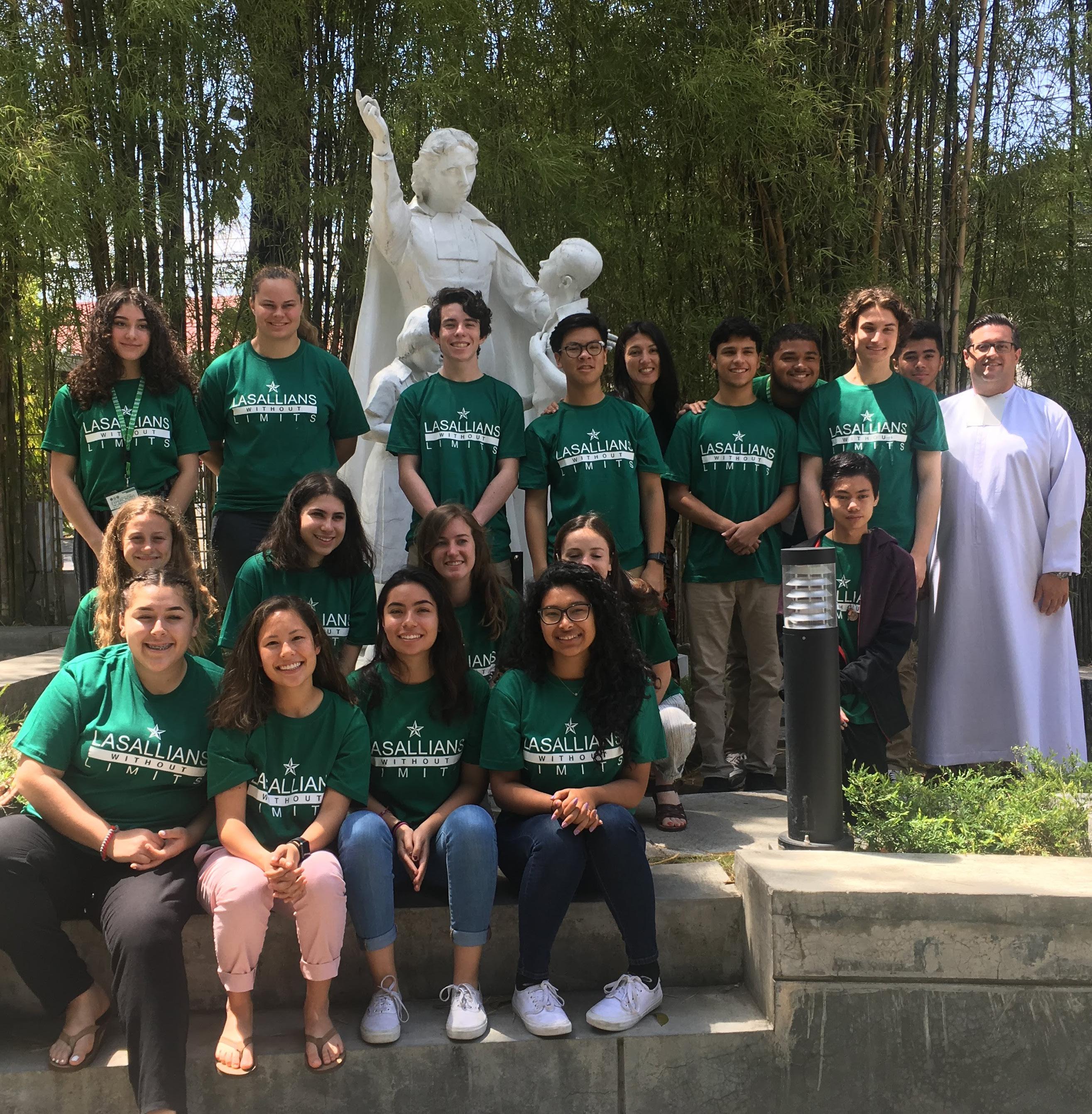
 A MAGAZINE FOR THE LASALLIAN FAMILY IN THE LASALLIAN REGION OF NORTH AMERICA
A MAGAZINE FOR THE LASALLIAN FAMILY IN THE LASALLIAN REGION OF NORTH AMERICA
Dear Lasallians,
When Saint John Baptist de La Salle founded the Brothers of the Christian Schools more than 300 years ago, his goal was to provide a human and Christian education to the young, especially the poor. What started in 17th century France with a small group of Brothers has now expanded to 80 countries with Brothers and Partners working together to touch the hearts of young people entrusted to their care.
During this liturgical year (December 2, 2018 – November 24, 2019), we are coming together as a Lasallian family to mark the Year of Lasallian Vocations, themed “One Heart. One Commitment. One Life.” The Year of Lasallian Vocations marks the 300th anniversary of De La Salle’s entry into eternal life and celebrates the ongoing impact of the mission he started.
With this special issue of De La Salle Today, we highlight the three goals of the Year of Lasallian Vocations: (1) to celebrate and give thanks for our common heritage and our vitality through our association for the transformative human and Christian education of the young, especially the poor, (2) to renew our commitment to respond to the reality and needs of today through promoting our mission, charism and founding story, and (3) to share our hope for the future within the unity and diversity of Lasallian vocations by witnessing the movement of the Spirit in our lives and ministry.
The articles you will read in this issue tie in with those goals as we recount the ways our heritage and founding story continue to guide our ministry, discuss the transformational aspect of our mission, look at how we are responding to the needs of today, delve into the importance of formation, examine the role of women in De La Salle’s life and today’s mission, and consider the many ways the Lasallian charism has shaped our vocations and calls to serve the mission. We offer questions at the end of each story for personal and/or communal reflection.
We hope that you can use this special issue of De La Salle Today as inspiration to reinvigorate your faith and zeal to deepen your call to serve. We also encourage you to share this issue with others as a tool to learn more about the Lasallian charism and mission while participating in living out the legacy of Saint John Baptist de La Salle.
Saint John Baptist de La Salle … Pray for us.
Live Jesus in our hearts … Forever!
DE LA SALLE TODAY IS PUBLISHED BY CHRISTIAN BROTHERS CONFERENCE FOR THE LASALLIAN FAMILY IN THE LASALLIAN REGION OF NORTH AMERICA (RELAN).
CHRISTIAN BROTHERS CONFERENCE
415 MICHIGAN AVENUE NE, SUITE 300
WASHINGTON, DC 20017
202-529-0047
WWW.LASALLIAN.INFO
GENERAL COUNCILOR, RELAN
BROTHER TIMOTHY COLDWELL, FSC
EXECUTIVE DIRECTOR, OFFICE FOR LASALLIAN EDUCATION
MARK JOHN FREUND
EDITORS
ELIZABETH MOORS JODICE
CHRIS SWAIN
ASSISTANT EDITOR/LAYOUT AND DESIGN
ANNA WADDELOVE
TRANSLATION
DENIS DE VILLERS
CONTRIBUTING WRITERS
BOB CARREJO
MARYANN DONOHUE-LYNCH
ELIZABETH MOORS JODICE
BROTHER TOM JOHNSON, FSC
CHRIS SWAIN
BROTHER GEORGE VAN GRIEKEN, FSC
ANNA WADDELOVE
PHOTOGRAPHY
BROTHER RICHARD BUCCINA, FSC
CATHEDRAL HIGH SCHOOL, EL PASO
CENTRE NOTRE-DAME DE LA ROUGE
CHRISTIAN BROTHERS HIGH SCHOOL, SACRAMENTO
CHRISTIAN BROTHERS UNIVERSITY

CRETIN-DERHAM HALL
JOSH CUPPEK
DE LA SALLE COLLEGE “OAKLANDS”
DE LA SALLE HIGH SCHOOL, NEW ORLEANS
DISTRICT OF EASTERN NORTH AMERICA
DISTRICT OF SAN FRANCISCO NEW ORLEANS
MARYANN DONOHUE-LYNCH
ERIC CONNOLLY PHOTOGRAPHY
BROTHER MICHAEL FEHRENBACH, FSC
GONZALEZ FAMILY
BROTHER LAWRENCE HALEY, FSC, DE LA SALLE ACADEMY, CONCORD
JAMES HANNON
INSTITUTE OF THE BROTHERS OF THE CHRISTIAN SCHOOLS COMMUNICATIONS SERVICE
BROTHER KEVIN JUNK, FSC
SIMON KIM, CATHEDRAL HIGH SCHOOL, LOS ANGELES
LA SALLE ACADEMY, PROVIDENCE
LA SALLE SECONDARY SCHOOL, RUMBEK
LEWIS UNIVERSITY
LIFETOUCH
SOOBIN LIM
PATRICK LO, DE LA SALLE UNIVERSITY, MANILA
YEFRY MEJIA
ALMA MEJÍA-GARCÍA
DEB NAHRGANG
BROTHER PIUS NSUKULA, FSC
EMILIE NG
SAINT MARY’S COLLEGE OF CALIFORNIA
SAN MIGUEL HIGH SCHOOL
PJ THOMPSON
JOE WELLING
CREATIVE CONSULTANT
JOHN BURNS DESIGN GROUP
PLEASE EMAIL COMMENTS TO COMMUNICATIONS@

LASALLIAN.INFO. THE EDITOR OF DE LA SALLE TODAY RESERVES THE RIGHT TO EDIT AND MAKE FINAL DECISIONS REGARDING THE CONTENT PUBLISHED IN THE MAGAZINE.
Cover: Brother David Caretti, FSC, right, and Robyn Canga, back center, lead students from Saint Mary’s College High School in Berkeley, California, on an immersion trip, which included working with Jaime Hilario School (Bagac) and both the day and night schools of De La Salle Santiago Zobel School, Manila, Philippines. Courtesy Patrick Lo, De La Salle University, Manila
ELIZABETH MOORS JODICE Editor CHRIS SWAIN Editor
BY ELIZABETH MOORS JODICE
BROTHER GEORGE VAN GRIEKEN, FSC
 BOB CARREJO
BOB CARREJO
 ANNA WADDELOVE
CHRIS SWAIN
ANNA WADDELOVE
CHRIS SWAIN
1 | DE LA SALLE TODAY 2 OUR FOUNDING STORY
8 LIVING A MISSION OF FAITH AND ZEAL BY
16 A TRANSFORMATIVE MISSION AND CHARISM
20 RESPONDING TO THE NEEDS OF TODAY
25 FORMATION: TRANSMITTING THE LASALLIAN CHARISM BY
29 THE INFLUENCE OF WOMEN IN THE LASALLIAN MISSION BY
34 INVITATIONS TO EXPLORE OUR LASALLIAN VOCATION BY
TODAY
BY
BY
BROTHER TOM JOHNSON, FSC
MARYANN DONOHUE-LYNCH
OUR FOUNDING STORY
SAINT JOHN BAPTIST DE LA SALLE’S JOURNEY TO ESTABLISH THE BROTHERS OF THE CHRISTIAN SCHOOLS
BY ELIZABETH MOORS JODICE
Saint John Baptist de La Salle was born into a life of privilege, raised in a wealthy family in 17th century France. He was set on a path to becoming a high-ranking Church leader and/or theologian. However, a brief encounter with someone who wanted to establish a free school for poor boys set De La Salle on a much different path, a path that even De La Salle later acknowledged he had no intention of taking.
This unexpected journey led him to establish the Brothers of the Christian Schools (De La Salle Christian Brothers), to become an innovative educational pioneer and advocate for the poor, to bring about an educational movement that still inspires thousands of educators, and on May 15, 1950, to be named the patron saint of all teachers of youth.
Today, more than 300 years since De La Salle helped to establish that first school, the Lasallian mission is thriving. In the pages ahead, we look back at how this transformative mission began and how providence guided De La Salle’s journey through the events of his life.
DE LA SALLE’S EARLY YEARS
John Baptist de La Salle was born in Reims, France, on April 30, 1651. The eldest son of Nicolle Moët de Brouillet and Louis de La Salle, he was one of 11 children, seven of whom survived to adulthood.

Early on, while it might have been expected that he would follow in his father’s footsteps as a court magistrate, he chose to pursue the priesthood. At 16, he received the distinguished position of canon. At 19, he moved to Paris to study at the Sorbonne and resided at the prestigious Seminary of Saint Sulpice.
Within 18 months, however, his world changed dramatically. His parents passed away, leaving him as executor of the family estate and guardian of his four brothers and two sisters. He had to return to Reims, although he was able to continue his studies and eventually was ordained a priest.
ONE STEP LEADS TO ANOTHER
Providence didn’t wait long for its next surprise. Within three weeks of De La Salle’s ordination, his close friend and spiritual advisor, Nicolas Roland, died. In his will, Roland left De La Salle to oversee the Sisters of the Child Jesus, a group that Roland had established in Reims, and to obtain for them official recognition from the city. De La Salle obliged, and, because of the lengthy process involved, learned about the educational situation in Reims along with the politics surrounding the establishment of a new charitable group.
A chance encounter on the steps of the Sisters’ convent in March 1679 launched De La Salle into direct involvement in the world of education. He met Adrien Nyel, a layman who had worked in Rouen, France, for many years, providing schooling for the poor. A wealthy widow had asked Nyel to start a free school for poor boys in Reims. Upon arrival, Nyel’s first call was at the convent of the Sisters, arriving at the same time as De La Salle had. They were introduced, they talked, and De La Salle invited Nyel to stay at his home so that they could consult with others on how to start this school. De La Salle’s help was effective, and the school opened. De La Salle thought that he was finished with that charitable project.

Shortly thereafter, however, another wealthy woman told Nyel that she also would like to endow a school, but only if De La Salle would stand behind it. Reluctantly, De La Salle agreed, assuring her that he would help make sure that the school ran well. Then a third school was similarly established in another part of the city. And so gradually, De La Salle found himself becoming drawn into a world that was very different than his own, the world of the poor—disadvantaged students, uncultured teachers, parents oppressed by poverty.
After a few years, Nyel suddenly departed to start schools elsewhere, leaving De La Salle to take care of the schools in Reims. De La Salle knew that the teachers were struggling, lacking leadership, purpose and training. He found himself taking increasingly intentional steps to help this small group with their work.
FOUNDING AN INSTITUTE
In 1680, in what is considered to be the founding of the Institute, De La Salle invited the men into his home for meals. This was as much to teach them table manners as to inspire and instruct them in their work. A year later he brought the teachers to live with him. Not surprisingly, his relatives strongly disapproved of these invitations.
His siblings successfully sued him for the house. De La Salle and the teachers moved to the poor part of the city, renting a house that would come to be called “the cradle of the Institute.” It was here that De La Salle and the teachers first began to call themselves “Brothers.” Community life became more formalized, and teaching gradually followed a common method and approach.
Even though they were doing better, the Brothers were concerned about their stability and security. De La Salle replied by telling them to trust in God’s Providence. The men responded that it was easy for
3 | DE LA SALLE TODAY 2019: YEAR OF LASALLIAN VOCATIONS
De La Salle to say that, since he was wealthy and received an income as a canon. If the schools failed, they had nothing, but De La Salle would be fine.
De La Salle wrote later that he was reduced to silence. He considered donating his wealth to the community. But he instead resigned his position as canon, and in the winter of 1683-1684 used the bulk of his family inheritance to feed the poor during a severe famine. He had now joined the Brothers in poverty, together relying on God’s providential care.
At the Brothers’ General Assembly in 1686, they approved a distinctive habit, took a vow of obedience, and officially adopted the name “Brothers of the Christian Schools.” A year later, De La Salle insisted that the Brothers elect one of their own as Superior. The Brothers reluctantly agreed, electing 24-year-old Brother Henri L’Heureux. De La Salle was the first to show strict obedience to him, which caused considerable controversy in Church circles. The archbishop ordered De La Salle to resume his position as Superior, and he did.
In 1688, he and two Brothers traveled to Paris where they revitalized a school for the poor in the parish of Saint Sulpice. This move established the group’s autonomy and freedom from the diocesan jurisdiction of Reims, and it allowed the Brothers in Reims to begin to develop without De La Salle.
RESPONDING TO CONTROVERSY
As the Brothers began to establish other schools in Paris, a perfect storm of difficulties arose. Because their free schools were open to anyone, not just the poor, they faced lawsuits, hostility, harassment and violence. Back in Reims, the 16 Brothers dwindled by half as Brothers left. Some devoted Brothers fell ill and died through overwork. De La Salle himself underwent a lengthy illness that brought him near death. The outlook for this enterprise suddenly seemed bleak.
In response to these crises, De La Salle brought the Brothers to Vaugirard, a simple, country property he had purchased outside of Paris, for an extended retreat. He then asked the Brothers to write to him every month and share their concerns and challenges. In 1691, he and two of his most trusted Brothers made a private “heroic vow,” committing themselves to the establishment of the "Society" even if they were the only three left and had to beg for bread.
BUILDING THE MISSION AMIDST STRUGGLES
In 1694, the first General Chapter was held, where for the first time, De La Salle and 12 Brothers took permanent vows of obedience, stability and association for the educational service of the poor. De La Salle, despite his wish for a Brother to have the office, was elected Superior.
In the years that followed, De La Salle and the Brothers expanded the schools and communities, welcoming many new Brothers. De La Salle wrote a variety of books and other resources, both for use in the schools and for the Brothers and community life. He also faced more legal battles. After one case was about to be unjustly judged against him in 1712, De La Salle gave his lawyer all related documents

4 | DE LA SALLE TODAY 2019: YEAR OF LASALLIAN VOCATIONS
The Heroic Vow Courtesy Brother Richard Buccina, FSC
and left Paris for an extended visit with Brothers in the south of France, outside of the jurisdiction of Paris.
On this journey, which lasted more than two years, De La Salle grappled with the dispiriting evidence that his presence and activities in Paris had seemed to harm the mission. In Marseilles, he started a novitiate, only to see it close when the local views regarding the Brothers and the Church came into conflict with his own. He ended up moving into the Brothers community in Grenoble, inspiring the Brothers, teaching when needed, and finding time for personal retreats.

DE LA SALLE’S PERSONAL STRUGGLES
By now, De La Salle’s physical health was poor, his long labors had worn him out, the difficulties in Paris continued to be a personal challenge, and the future was unclear. He pondered the usefulness of his presence within the Institute and wondered whether God was taking him on a different path. He spent several weeks at a hillside retreat house in nearby Parménie, guided by a devout and pious if illiterate visionary, Sister Louise.
Providence touched him once more. In 1714, he received a letter from the Brothers of the Paris area, where external Church authorities were tampering with the Brothers’ self-governance and rewriting their Rule. The Brothers wrote: “We, the principal Brothers of the Christian Schools … command you
in the name of the body of this Society to which you have vowed obedience … to immediately take up again responsibility for the overall government of our Society.”
With Sister Louise’s encouragement, De La Salle returned to Paris. As the Brothers opened the door, he said, “Here I am. What do you want me to do?”
Even with De La Salle’s return, he allowed Brother Barthélemy, who he had asked to look after things, to remain in charge. De La Salle’s presence, connections and guidance helped to resolve most of the difficulties. After a year in Paris, De La Salle moved to Rouen and into Saint Yon—a complex that housed the novitiate, a boarding school and a juvenile detention center. Here he began to make arrangements for another General Chapter.
The Brothers at this time constituted 23 houses and 34 educational establishments throughout France, with 100 Brothers, some 18 novices, and one Brother in Rome. The “principal Brothers” assembled in May of 1717 for their General Chapter. At their request, De La Salle drew up a definitive Rule. The assembly formally elected Brother Barthélemy as the new Superior.
THE SAINT DIES, BUT HIS MISSION CONTINUES
De La Salle ventured forth from Saint Yon a few times, but his age and tireless labors were catching up to him. Returning after one extended visit to Paris, he became very ill. Yet even on his deathbed, his long practice of submission to God’s will, reading events in his life as providential calls from God, found him essentially at peace. When Brother Barthélemy asked De La Salle on the evening before he died if he accepted his sufferings, De La Salle replied, “Yes, I adore God guiding me in all the events of my life.” These were his last words.
2019: YEAR OF LASALLIAN VOCATIONS
A view of Parménie. Courtesy Institute of the Brothers of the Christian Schools Communications Service
OUR FOUNDING STORY CONTINUED
On Good Friday, De La Salle made an effort to rise as if to greet someone, then joined his hands, raised his eyes to heaven, and died. He was buried on Holy Saturday in a side chapel of the local parish church, Saint Sever. Word soon spread that “the Saint is dead.” But the providential extension of his life, work and influence was just beginning. •
Information for this story came from: District of San Francisco, Signs of Faith, Fall 2000, vol. 3, #1 (Napa, CA); In the Footsteps of De La Salle, www.dlsfootsteps.org; and Brother George Van Grieken, FSC, Touching the Hearts of Students (Landover, MD: Christian Brothers Conference, 1999).
SAINT JOHN BAPTIST DE LA SALLE: A TIMELINE 1651-1950

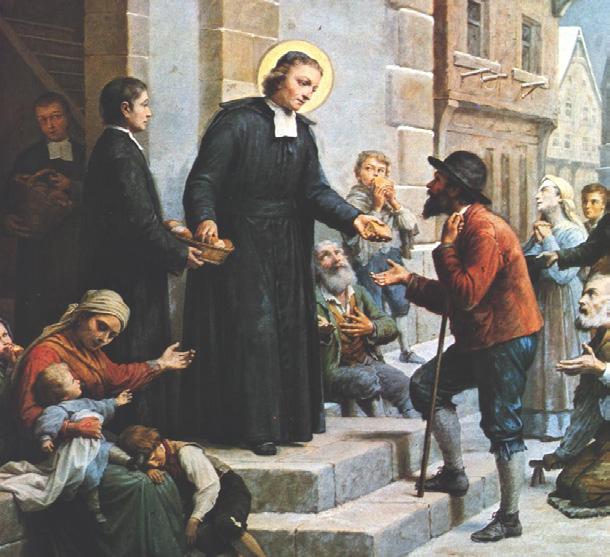
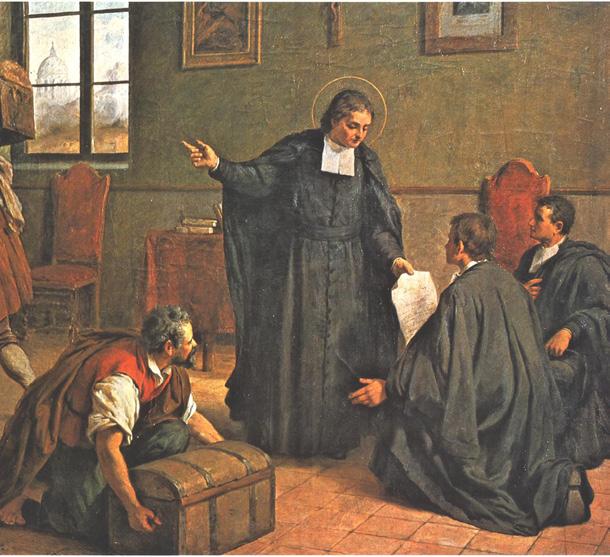
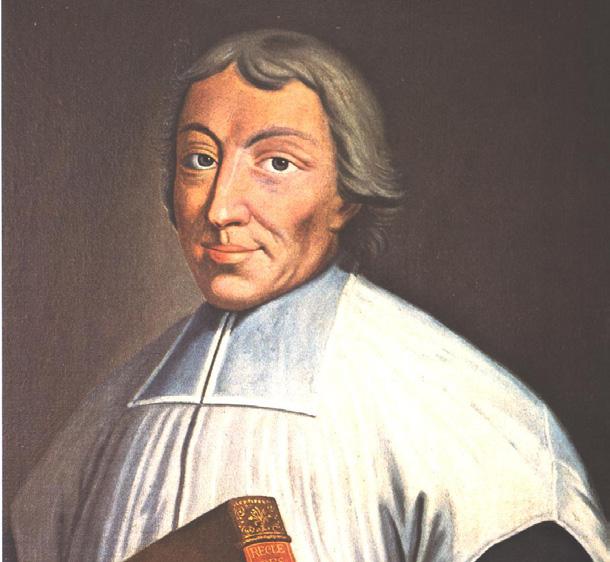

1651
De La Salle is born in Reims, France, on April 30.
1666
1683-84
1678
1683
1702
1719
1666
At age 10, De La Salle participates in a ceremony to formally indicate his interest in becoming a priest.
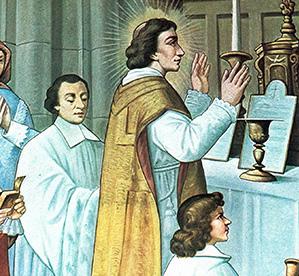
1671
1672 1661
Louis
1678
De La Salle receives his licentiate in theology.
De La Salle is ordained a priest.
Nicolas Roland dies, leaving De La Salle to oversee the Sisters of the Child Jesus.
6 | DE LA SALLE TODAY 2019: YEAR OF LASALLIAN VOCATIONS
Elizabeth Moors Jodice is director of communications for Christian Brothers Conference.
De La Salle is named Canon of the Cathedral of Reims.
de La Salle, De La Salle’s father, dies.
Nicolle Moët de Brouillet, De La Salle’s mother, dies.
A providential encounter with Adrien Nyel at the convent of the Sisters of the Child Jesus involves De La Salle with establishing free schools for poor boys.
De La Salle receives his doctorate in theology.
De La Salle invites the teachers into his home for meals, meetings and prayer.
De La Salle brings the teachers into his home as their residence.
De La Salle resigns his position as canon, giving up his status and income.
De La Salle gives away his wealth to feed the poor during a famine.
1688
The first General Chapter is held, where De La Salle and 12 Brothers make perpetual vows and adopt the first Rule.
1702
Brothers Gabriel and Gerard Drolin leave France to extend the work to Rome.
De La Salle and two Brothers profess a “heroic vow” to establish the “Society”even if all others leave and they have to beg for bread.
1705
The Brothers open an establishment at St. Yon, which includes a novitiate, boarding school and home for delinquent boys. Formal permission is given to print all works prepared by De La Salle for use in the schools.
The Brothers face challenges: some Brothers leave, others die; De La Salle suffers a near-fatal illness; new schools open; opposition and legal battles continue.
De La Salle and two Brothers travel to Paris to assume direction of a parish school at the invitation of the pastor, marking their first establishment outside of Reims.
The first General Assembly is held, where the teachers adopt the name “Brothers of the Christian Schools,” decide on a simple habit, and take a vow of obedience.
1711
The Clément family wins a lawsuit against De La Salle, which costs the Institute money and property and degrades De La Salle’s integrity. De La Salle leaves Paris for the south of France.
1714
The Brothers summon De La Salle back to Paris from Parménie, demanding that he resume leadership of the Institute. De La Salle returns to Paris.
1725
De La Salle is proclaimed patron of all teachers of youth on May 15.
1900
De La Salle is canonized on May 24.
De La Salle is beatified on February 19.
1717
The second General Chapter elects Brother Barthélemy as the Superior General.
1718
De La Salle resides at St. Yon, writing and ministering, but becoming increasingly ill.
1724
The Church recognizes the Brothers as an Institute of Pontifical Right in a papal bull of approbation.
The Institute receives state recognition as a legal entity.
De La Salle dies at St. Yon on Good Friday, April 7.
7 | DE LA SALLE TODAY 2019: YEAR OF LASALLIAN VOCATIONS
1679
1691 1690 1694 1681
1950 1683-84
1719 1888 1680
1686 1683
LIVING A MISSION OF FAITH AND ZEAL
BY BROTHER GEORGE VAN GRIEKEN, FSC
THE
EDUCATIONAL CHARISM THAT SAINT JOHN BAPTIST
DE LA SALLE (1651-1719) LAUNCHED INTO THE WORLD HAS TOUCHED MILLIONS OF LIVES DURING THE PAST 300 YEARS, AND IT CONTINUES TO DO SO TODAY.
He said himself that he had not planned to become involved in education, and he had certainly not intended to become the founder of an institute. Yet, he did both.
Looking back, De La Salle wrote, “I had imagined that the care which I assumed of the schools and the masters would amount only to a marginal involvement … Indeed, if I had ever thought that the care I was taking of the schoolmasters out of pure charity would ever have made it my duty to live with them, I would have dropped the whole project … [but] God, who guides all things with wisdom and serenity, whose way it is not to force the inclinations of persons, willed to commit me entirely to the development of the schools … in an imperceptible way and over a long period of time so that one commitment led to another in a way that I did not foresee in the beginning.” 1
It was precisely this profound, deep trust in God’s providential, engaged, incremental guidance that brought about not only the extensive worldwide educational heritage that we know as “Lasallian”
today, but it also defined a specific approach to the ministry of education. To guide with wisdom and serenity, to not force the inclinations of persons, to lead imperceptibly so that one decision or one choice leads to another—isn’t this a wonderful description of how genuine education happens?
De La Salle’s description of how God “taught” him informed what Lasallian education would come to look like during the course of the 40 years that he guided his Brothers.
GUIDING EDUCATION WITH FAITH AND ZEAL
De La Salle described the spirit[uality] of the Institute in terms of faith and zeal—perspectives and practices—a single spirit that has two complementary dimensions. Specific practices came to define a certain way of approaching education, and specific perspectives or convictions came to permeate a wide variety of educational contexts. Together, they continue to provide accessible signposts for us today. Below are some, and only some, examples of
8 | DE LA SALLE TODAY 2019: YEAR OF LASALLIAN VOCATIONS
practices for students and perspectives for teachers that De La Salle implemented in the beginning and that still resonate in Lasallian ministries today.
Practices for Students
• Educational Innovation: Students learned how to read by reading French (their native language) instead of first learning to read in Latin (the general practice at the time).
• Individual Diversity: Student qualities, abilities and characteristics, along with family circumstances, were written down by one teacher and passed on to the next teacher.
• Practical Integration: Students learned to write using different styles of script and copying from common daily documents: letters, contracts, bills of sale and the like.
• Social Sensibility: Students read Christian Decorum and Civility, written by De La Salle for young inner-city boys. Yawning, spitting and coughing received a whole chapter.

• Positive Correction: Students benefitted from an emphasis by their teachers on supporting success and encouraging improvement, instead of punishing failure.
Perspectives for Teachers
• Eyes of Faith: Look deeper and further than your students. “Recognize Jesus beneath the poor rags of the children whom you have to instruct; adore him in them.” 2
• Vocational Zeal: Know who you are and what you are about. “Make no distinction at all between the work of your state and the work of your salvation and perfection.” 3
• Gentle Firmness: Treat students as God treats us. “The more tenderness you have for the mem-
bers of Jesus Christ and of the Church who are entrusted to you, the more God will produce in them the wonderful effects of his grace.” 4
• Modeling: “Example makes a much greater impression on the mind and heart than words.” 5
• Cultivate Virtues: 12 virtues of a teacher are “Seriousness, silence, humility, prudence, wisdom, patience, reserve, meekness, zeal, vigilance, piety, generosity.” 6
LASALLIAN SPIRITUALITY, EDUCATION AND PEDAGOGY
Lasallian spirituality focuses on the approach, implementation and context of the activity of education. Lasallian education has the school as its setting, the teacher as its focus, and the salvific potential of education as its inspiration. And Lasallian pedagogy is Lasallian precisely because of, not in spite of or along with, its spiritual dimensions. It is ultimately their spiritual life that motivated, shaped and realized the pedagogy of De La Salle and his Brothers. We may express that spiritual life in different ways, yet their deeper currents all emerge out of the common heritage that we continue to identify as Lasallian.
9 | DE LA SALLE TODAY 2019: YEAR OF LASALLIAN VOCATIONS
9 | DE LA SALLE TODAY 2019: THE YEAR OF LASALLIAN VOCATIONS
LIVING A MISSION OF FAITH AND ZEAL CONTINUED
FIVE CORE PRINCIPLES
Within the past 25 years, those currents have come to be identified and celebrated in a number of ways. Many schools have gravitated around Five Core Principles. Proposed in 1992-1993 among the schools on the West coast, they are based on a 1967 document of the Brothers called The Declaration 7 It has been well said that such principles do not “define us or even distinguish us—rather, they help to describe what we do and why we do it. Other articulations of core commitments add to the conversation and enrich it.” 8 While variations of these core principles are used, 9 here is one popular articulation:
• Faith in the Presence of God: De La Salle’s overriding concern in all that he did was the life of faith, the reality of God’s saving presence in the midst of daily experience. Lasallians readily share their faith life with others, both in their zeal for education and in their personal encounters. God’s presence gradually becomes an ever more living and appreciated reality.
• Respect for All Persons: Mutual respect and its results—cooperation, generosity, patience, humor and humility—are not the exception but the rule in Lasallian institutions. Others have an inherent digni-
ty derived from a humanity that God created, shares with us in Jesus, and has fully redeemed. We treat others as God would.
• Inclusive Community: Community is at the heart of all Christian education and especially Lasallian education. Relationships are the privileged means of the educational encounter, and inclusion is the privileged means for realizing their transformative potential. We educate together as one community and in association with our other communities.
• Quality Education: Lasallian education is more than facts, figures and skills. Genuine education forms a person slowly toward spiritual maturity and responsible character. Lasallian schools intentionally educate a wide range of students by providing a comprehensive curriculum with solid, diverse programs that meet recognized standards of excellence.
• Concern for the Poor and Social Justice: The poor, the neglected, the marginalized, and all who endure social injustice are an evident, clear priority in the planning, approach, exercise and evaluation of Lasallian ministries and those involved in them.

THE IMPORTANCE OF COMMUNITY
When it comes to doing well what we have been doing for over 300 years, all of these things are important. Yet what binds our practices and perspectives together, what brings them to life, is our educational community. One Lasallian scholar describes Lasallian education as a pedagogy of fraternity. 10
Everything described above either flourishes or falls by the wayside based on the kind of community within which these elements are encouraged and maintained. And the kind of community that De La Salle advocated for the Brothers mirrors the kind of community that he
hoped for, and worked for, within the schools: “Union in a community is a precious gem … If we lose this, we lose everything. Preserve it with care, therefore, if you want the community to survive.” 11 It is a particular kind of educational community that provides the foundation for what happens with the rest.
Therefore, as a Lasallian community, we are called to pay attention to how we relate to one another, listen to one another, resolve conflicts with one another, rejoice with one another, and educate our students with one another. Our community is what essentially grounds God’s providential guidance for us—a community that proceeds with wisdom and serenity, not forcing the inclinations of persons, guiding one another imperceptibly, with one step leading to another, until we arrive at a place we may not have been able to see in the beginning. •
Brother George Van Grieken, FSC, is director of the Lasallian Resource Center in the District of San Francisco New Orleans.
Lasallian educators approach their daily ministry through the eyes of faith. Courtesy Christian Brothers High School, Sacramento
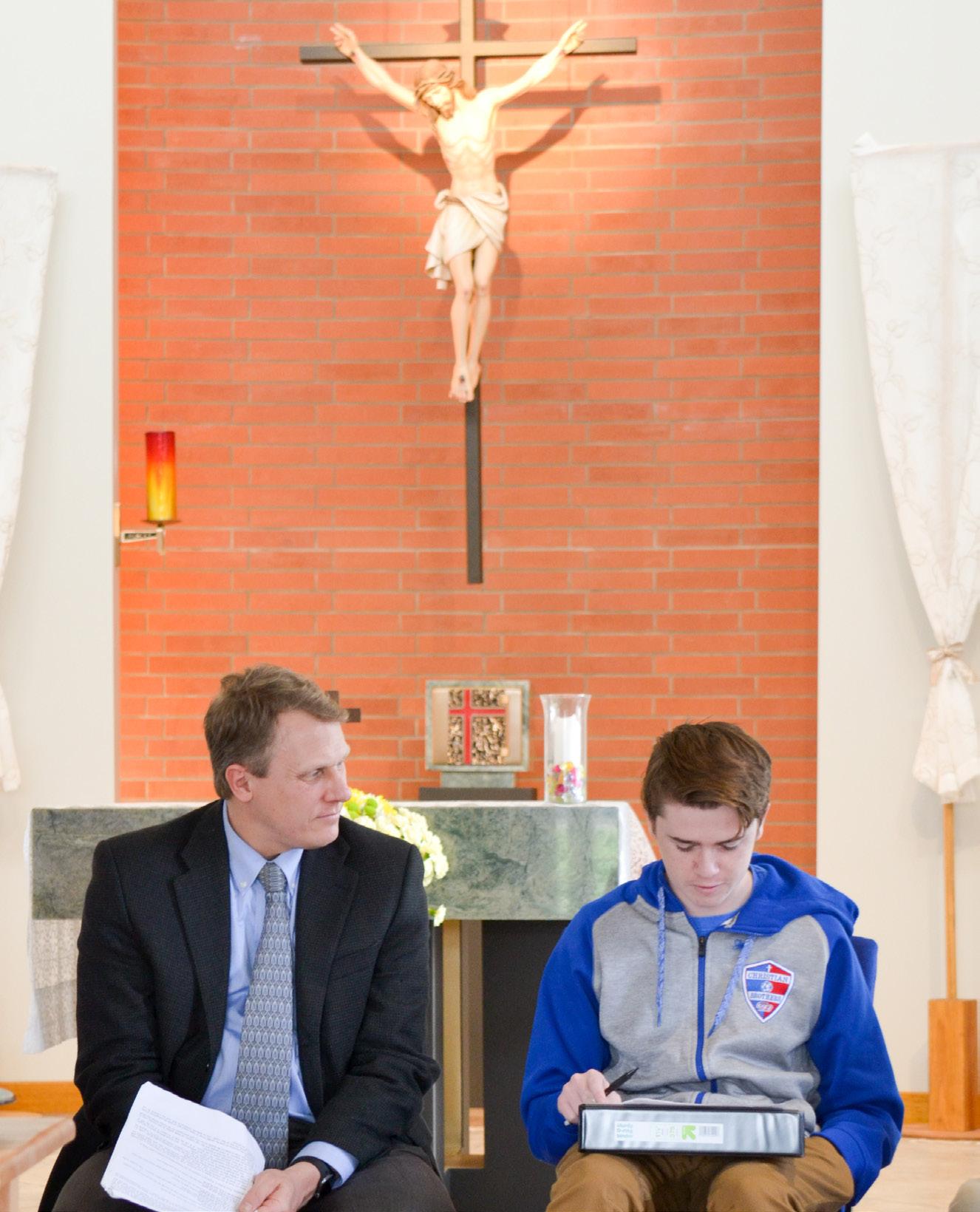
Citations
1. Jean-Baptiste Blain, The Life of John Baptist de La Salle, vol. 1, trans. Richard Arnandez, FSC (Romeoville, IL: Christian Brothers Conference, 1983), 80.
2. John Baptist de La Salle, Meditations, trans. Richard Arnandez, FSC, and Augustine Loes, FSC, ed. Augustine Loes, FSC, and Francis Huether, FSC (Landover, MD: Christian Brothers Conference, 1994), Med 96.3, p. 179.
3. John Baptist de La Salle, Collection of Various Short Treatises, trans. W. J. Battersby, FSC, ed. Daniel Burke, FSC (Romeoville, IL: Lasallian Publications, 1993), 78.
4. De La Salle, Meditations, Med 134.2, p. 247.
5. De La Salle, Meditations, Med 202.3, p. 456.
6. De La Salle, Collection of Various Short Treatises, 5.
7. Brothers of the Christian Schools, The Brother of the Christian Schools in the World Today: A Declaration (Rome: 1967).
8. Dr. Greg Kopra, email to the author, September 12, 2018.
9. A similar set of Goals of Lasallian Ministries, adopted in other parts of the United States, includes the following: We instill Gospel values; We are animated by and foster a spirit of faith and zeal; We develop and maintain diverse programs meeting recognized standards of excellence; We create and sustain respectful human relationships in community; We exercise a preferential option for the poor.
10. Leon Lauraire, FSC, “A Pedagogy of Fraternity,” AXIS: Journal of Lasallian Higher Education vol. 7, no. 3 (2016), 31.
11. De La Salle, Meditations, Med 91.2, p. 386.
QUESTIONS FOR REFLECTION
1. How does De La Salle’s reflection that “one commitment led to another in a way that I did not foresee in the beginning” connect with your lived experience?
2. Which one of the practices or perspectives do you find to be most compelling? Why?
3. What could you do, either individually or in community, to explore some of the points discussed more fully? What would stop you from doing that?
11 | DE LA SALLE TODAY 2019: THE YEAR OF LASALLIAN VOCATIONS
VIVRE UNE MISSION DE FOI ET DE ZÈLE
LE CHARISME ÉDUCATIF QUE SAINT JEAN BAPTISTE DE LA SALLE
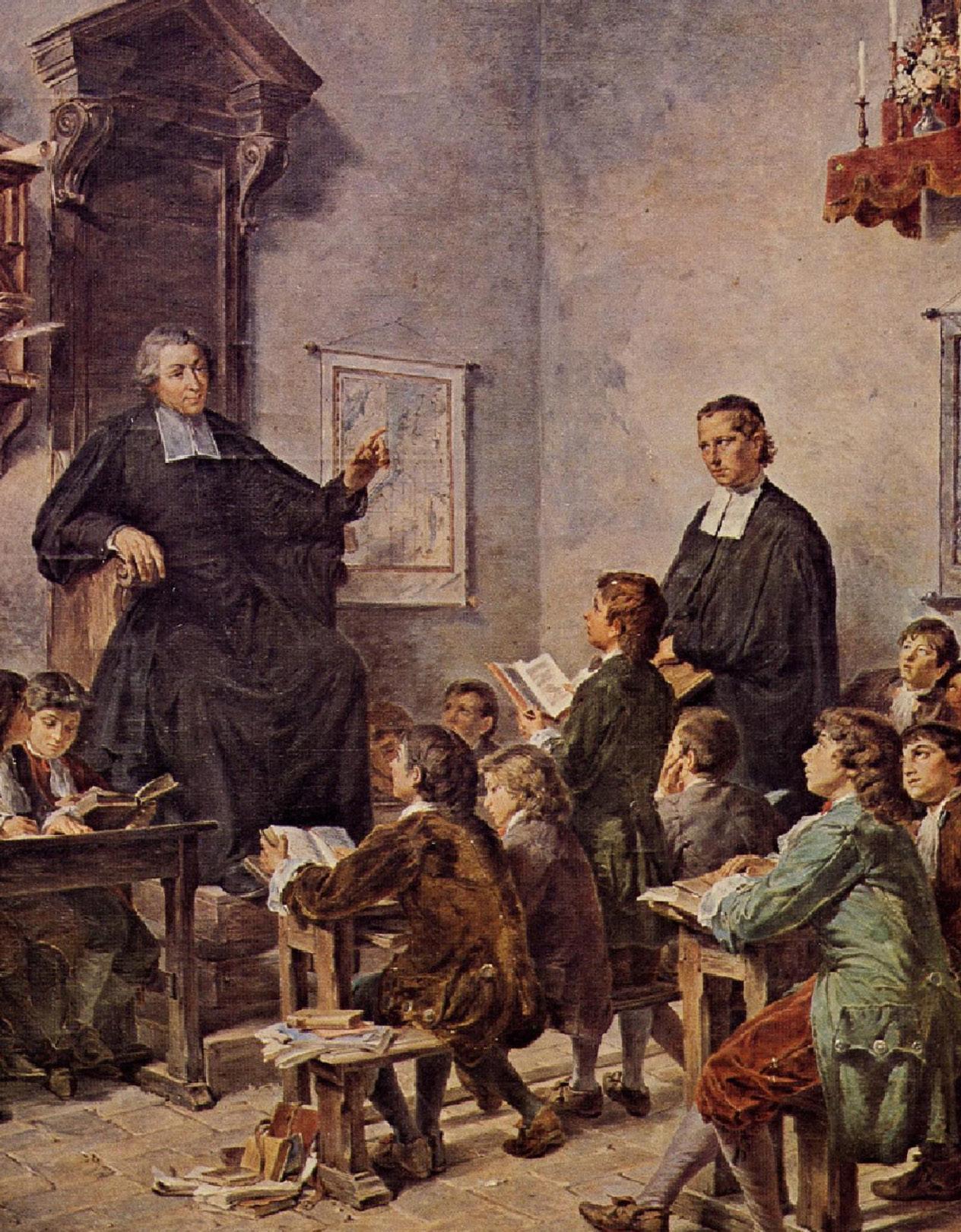
(1651-1719) A MIS AU MONDE A TOUCHÉ DES MILLIONS
DE VIES AU COURS DES 300 DERNIÈRES ANNÉES, ET IL CONTINUE À LE FAIRE AUJOURD'HUI.
De son propre aveu, De La Salle n'avait pas prévu s'impliquer dans l'éducation, et il n'avait certainement pas l’ambition de devenir le fondateur d'un institut religieux. Et pourtant, il a réalisé les deux.
En rétrospective, De La Salle écrit: « [Alors] que j’ai commencé à prendre soin des écoles (…) je n’y pensais nullement. (…) Si même j’avais cru que le soin de pure charité que je prenais des maîtres d’école, eût dû jamais me faire un devoir de demeurer avec eux, je l’aurais abandonné; (…) [mais] Dieu qui conduit toutes choses avec sagesse et douceur, et qui n’a point coutume de forcer l’inclination des hommes, voulant m’engager à prendre entièrement le soin des écoles, le fit d’une manière fort imperceptible, et en beaucoup de temps; de sorte qu’un engagement me conduisit dans un autre, sans l’avoir prévu dans le commencement. » 1
C'est précisément cette profonde confiance dans l’orientation providentielle, engagée et
respectueuse de Dieu qui ont fait naître non seulement le vaste patrimoine éducatif mondial que nous connaissons aujourd'hui comme «lasallien», mais il a également révélé une approche spécifique au « ministère » de l’éducation. C’est en guidant avec sagesse et sérénité, en ne forçant pas les inclinations des personnes, en conduisant imperceptiblement de sorte qu'une décision ou un choix conduit à un autre plus engageant; N’est-ce pas là une description merveilleuse de la façon réelle dont l'éducation se produit? Cette description que De La Salle donne de la façon dont Dieu « l’a instruit », illustre bien ce à quoi l’éducation lasallienne ressemblerait au cours de ces 40 années où il a guidé ses frères.
GUIDER L'ÉDUCATION AVEC FOI ET ZÈLE
De La Salle décrivait l'esprit (la spiritualité) de l'Institut en termes de foi et de zèle, de perspectives et de pratiques, c’est-à-dire d’un esprit unique qui
PAR FRÈRE GEORGE VAN GRIEKEN, F.É.C.
comporte deux dimensions complémentaires. Des pratiques précises qui viennent définir une certaine façon d'aborder l'éducation, et des perspectives spécifiques (des convictions) qui en sont venues à imprégner une grande variété de contextes éducatifs. Toutes deux continuent à être des balises toujours significatives pour nous aujourd'hui. Voici quelques exemples de pratiques pour les élèves et des perspectives pour les enseignants que De La Salle a mis en œuvre dans les commencements et qui résonnent encore dans les ministères lasalliens d’aujourd'hui.
Pratiques pour les élèves
• Innovation éducative: Les élèves apprennent à lire en lisant le français (leur langue maternelle) au lieu d'apprendre à lire en latin (la pratique générale à l'époque).
• Diversité individuelle: Les qualités, capacités et caractéristiques des élèves, ainsi que les circonstances familiales, sont écrites par un enseignant et transmises à l'enseignant suivant.
• Intégration pratique: Les élèves apprennent à écri-
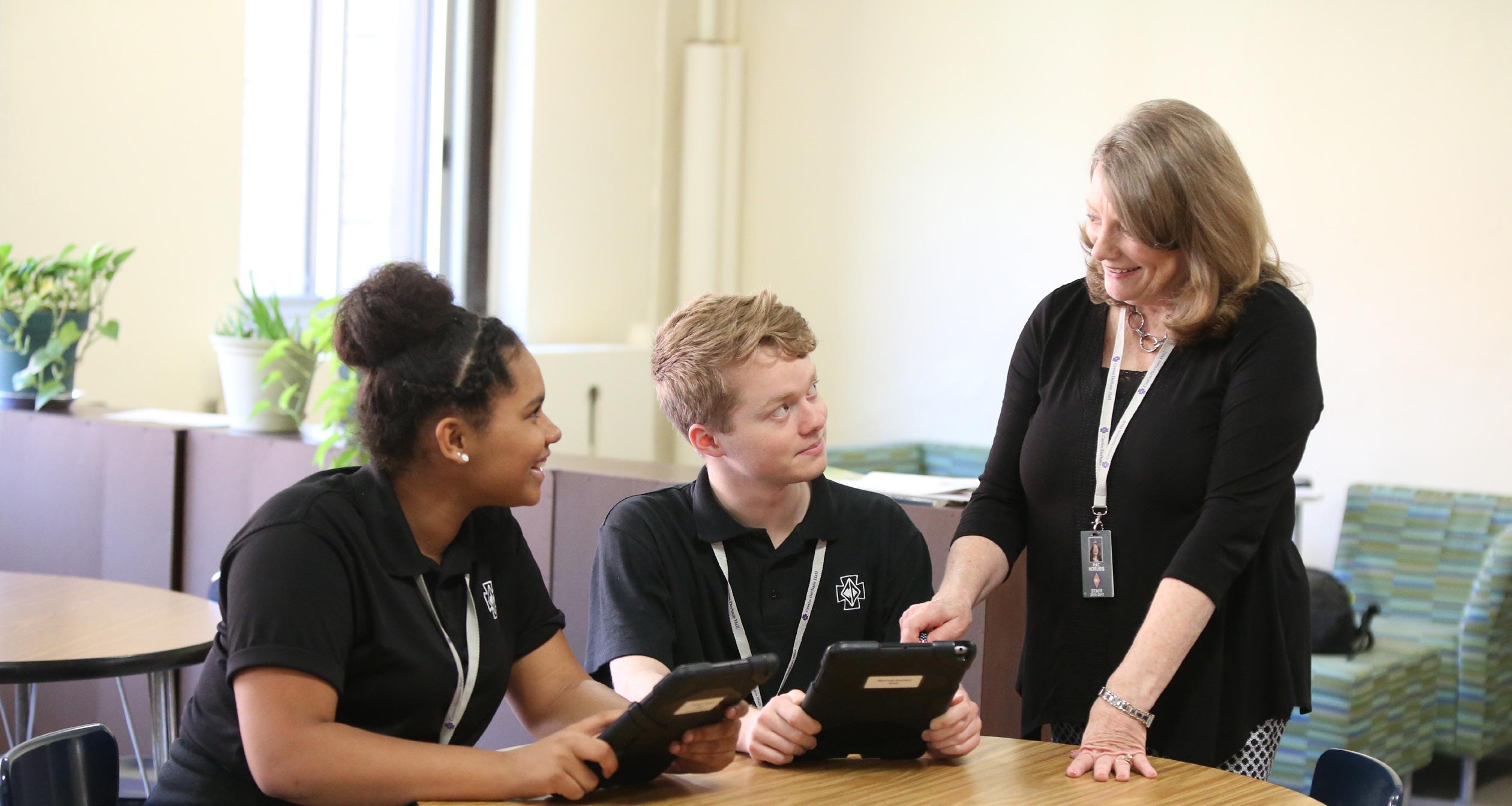
re en utilisant différents styles manuscrits et en retranscrivant divers documents quotidiens communs: lettres, contrats, factures de vente et autres.
• Sensibilité sociale: Les élèves lisent les Règles de la bienséance, écrites par De La Salle pour les jeunes garçons de la ville. Bâiller, cracher et tousser font l’objet d’un chapitre entier.
• Correction positive: Les élèves ont bénéficié de professeurs qui ont mis l’accent sur les encouragements et le soutien à la réussite plutôt que de simplement punir l’échec.
Perspectives pour les enseignants
• Yeux de la foi: Regardez plus profondément et plus loin que vos élèves. « Reconnaissez Jésus sous les pauvres haillons des enfants que vous avez à instruire : adorez-le en eux. » 2
• Zèle professionnel: Sachez qui vous êtes et ce que vous êtes. « Ne faites point de différence entre les affaires propres de votre état et l’affaire de votre salut et de votre perfection. » 3
• Fermeté douce: Traitez les élèves comme Dieu nous traite. « Plus vous avez de tendresse pour les
(Ci-dessous) Innovation pédagogique et de solides relations entre éducateurs et élèves ont longtemps été les signes distinctifs de la
mission Lasallienne. Gracieuseté de Cretin-Derham
Hall
Below: Educational innovation and strong relationships between educators and students have long been hallmarks of the Lasallian mission. Courtesy Cretin-Derham Hall
La mission Lasallienne donne la priorité aux questions de justice sociale, notamment par le biais de programmes tels que El Otro Lado : Guides dans la Rencontre, que les éducateurs ont connu par le biais de l’Institut Lasallien de Justice Sociale 2017. Gracieuseté d’Alma Mejía-García
The Lasallian mission prioritizes social justice issues, including through programs like El Otro Lado: Guides in the Encounter, which educators experienced through the 2017 Lasallian Social Justice Institute. Courtesy Alma Mejía-García
membres de Jésus-Christ et de l'Eglise qui vous sont confiées, plus Dieu produira en eux les merveilleux effets de sa grâce. » 4
• Modélisation: « L'exemple fait beaucoup plus d’impression sur l'esprit et sur le cœur que les paroles. » 5
• Cultiver les Vertus: Les 12 vertus d'un enseignant sont : gravité, silence, humilité, prudence, sagesse, patience, réserve, douceur, zèle, vigilance, piété, et générosité. 6
SPIRITUALITÉ LASALLIENNE, ÉDUCATION ET PÉDAGOGIE
La spiritualité lasallienne se concentre sur l'approche, la mise en œuvre et le contexte de l'activité éducative. L'éducation lasallienne a l'école comme cadre, l'enseignant en son centre et le potentiel salvifique de l'éducation comme inspiration première. Et la pédagogie lasallienne est justement lasallienne à cause des dimensions spirituelles qu’elle intègre. C'est en fin de compte la vie spirituelle des frères qui a motivé, façonné et réalisé la pédagogie de De La Salle et de sa communauté. Nous pouvons exprimer cette vie spirituelle de différentes manières, mais leurs racines profondes conduisent toutes à l'héritage commun que nous continuons à identifier comme lasallien.
CINQ PRINCIPES FONDAMENTAUX
Au cours des 25 dernières années, ces racines ont été identifiés et célébrés de plusieurs façons. De nombreuses écoles gravitent autour de ces cinq principes fondamentaux. Proposé en 1992-1993 parmi les écoles de la côte ouest, elles sont basées sur un document de 1967 des Frères appelés La Déclaration 7 Il a été souligné que ces principes ne « Nous définissent pas ou même ne nous distinguent pas ; mais ils nous aident plutôt à décrire ce que nous faisons et pourquoi nous le faisons. » D'autres articulations de ces engagements de base ajoutent
à la conversation et l'enrichissent. 8 Bien que les variations de ces principes de base soient utilisées, 9 Voici une articulation généralement admise:
• La foi en la présence de Dieu: La préoccupation primordiale de De La Salle dans tout ce qu'il a fait était la vie de la foi, la réalité de la présence salvatrice de Dieu est au coeur de l'expérience quotidienne. Les lasalliens partagent volontiers leur vie de foi avec les autres, tant dans leur zèle pour l'éducation que dans leurs rencontres personnelles. La présence de Dieu devient progressivement une réalité plus vivante et appréciée.
• Respect de toutes les personnes: Le respect mutuel et ce qu’il en résulte, la coopération, la générosité, la patience, l'humour et l'humilité ne sont pas l'exception, mais la règle dans les institutions lasalliennes. Notre prochain a une dignité inhérente issue d'une humanité que Dieu a créé, partagé avecnous en Jésus, et qu’Il a entièrement racheté. Nous traitons l’autre comme Dieu le ferait.
• Communauté inclusive: La communauté est au cœur de toute l'éducation chrétienne et en particulier de l'éducation lasallienne. Les relations et l’inclusion sont les moyens privilégiés d’une intervention éducative transformatrice. Nous éduquons ensemble en tant que communauté et en association avec nos autres communautés.
• Une éducation de qualité: L'éducation lasallienne est plus que des mots, des connaissances et des compétences. L'éducation authentique forme une personne lentement vers sa maturité spirituelle et son caractère responsable. Les écoles lasalliennes éduquent intentionnellement un large éventail d'élèves et d’étudiants en fournissant un curriculum complet grâce à des programmes solides et diversifiés qui répondent à des normes d'excellence reconnues.
• Préoccupation pour les pauvres et la justice sociale: Les pauvres, les négligés, les marginaux et tous ceux qui subissent l'injustice sociale sont
14 | DE LA SALLE TODAY 2019: YEAR OF LASALLIAN VOCATIONS
14 | DE LA SALLE TODAY 2019: THE YEAR OF LASALLIAN VOCATIONS
une priorité évidente et claire dans la planification, l'approche, l'exercice et l'évaluation des ministères lasalliens et de ceux qui y travaillent.
L'IMPORTANCE DE LA COMMUNAUTÉ
Quand il s'agit de bien faire ce que nous avons fait pendant plus de 300 ans, toutes ces choses sont importantes. Mais ce qui lie nos pratiques et nos perspectives ensemble, ce qui les amène à la vie, est notre communauté éducative. Un érudit lasallien décrit l'éducation lasallienne comme une pédagogie de la fraternité 10 Tout ce qui est décrit ci-dessus peut venir au monde et, soit prospérer, ou s’évanouir, selon le type de communauté dans laquelle ils prennent vie et sont maintenus. Et le type de communauté que De La Salle a mis de l’avant pour les frères reflète le genre de communauté qu'il espérait, et pour laquelle il a travaillé, par et dans les écoles:
« C’est une pierre précieuse que l’union dans une communauté (...) Si on la perd, on perd tout. C’est pourquoi, conservez-la avec soin, si vous voulez que votre communauté se soutienne. » 11 C'est un genre particulier de communauté éducative qui fournit les fondations de tout ce qui se passe au-dehors d’elle.
En tant que communauté lasallienne, nous sommes appelés à prêter attention à la façon dont nous interagissons les uns avec autres, écoutons les uns les autres, résolvons nos conflits, réjouissons les
uns avec les autres et à nos façons d’éduquer nos étudiants les uns avec les autres. Notre communauté, les uns avec les autres, avec nos étudiants, et avec tous ceux qui constituent la communauté éducative, est ce qui rend possible l’orientation providentielle de Dieu en tant qu'éducateurs lasalliens. C'est une communauté qui procède avec sagesse et douceur, ne forçant aucunement les inclinations des personnes, et en conduisant l'un et l'autre imperceptiblement de sorte qu'une étape mène à une autre plus engageante à un endroit que nous ne pouvions soupçonner au commencement. •
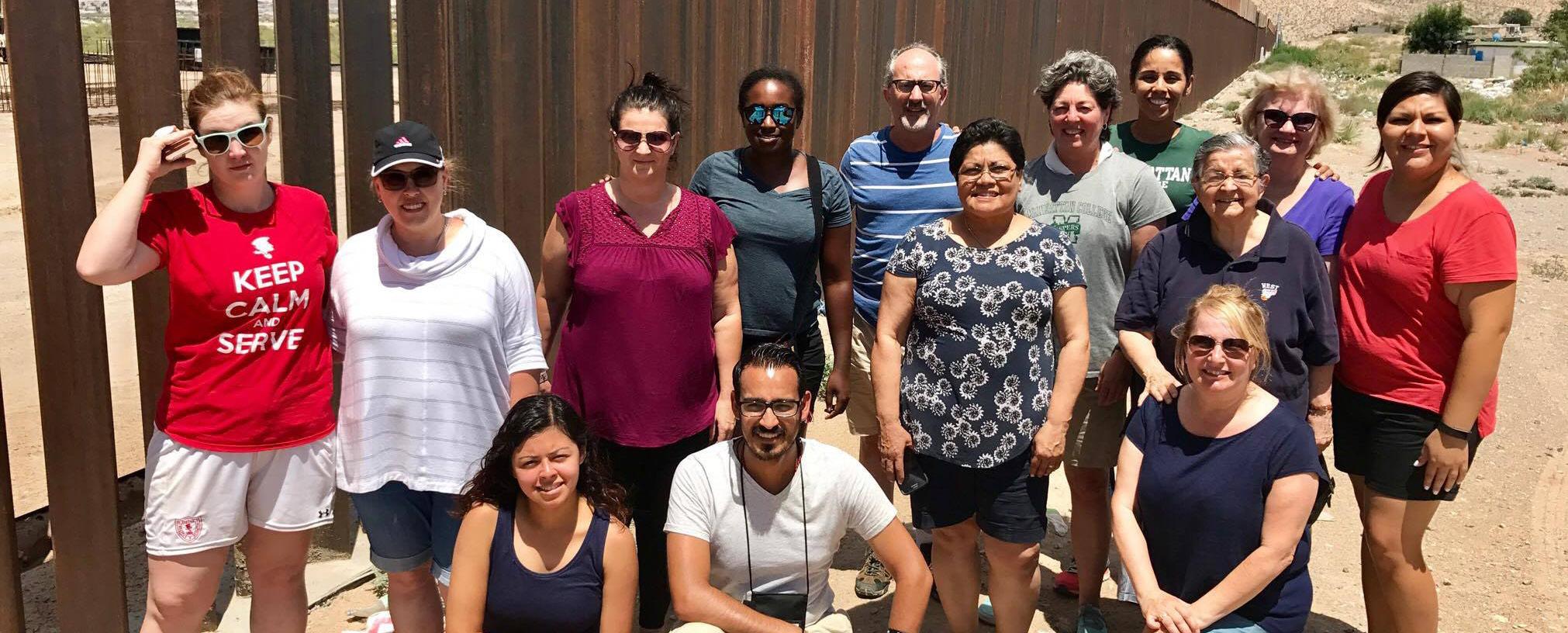
Voir les citations en page 11.
Par le frère George Van Grieken, FEC, qui est directeur du Lasallian Resource Center dans le district de San Francisco la Nouvelle-Orléans.
QUESTIONS POUR RÉFLEXION
1. Comment la réflexion de De La Salle, qui a réalisé qu’ « un engagement me conduisit dans un autre, sans l’avoir prévu dans le commencement » trouve un écho dans votre expérience vécue ?
2. Lesquelles, parmi ces pratiques ou perspectives, vous semblent être les plus convaincantes ? Pourquoi ?
3. Que pourriez-vous faire, individuellement ou en communauté, pour explorer plus en détail certains des points ici présentés ? Qu’est-ce qui vous empêcherait de le faire ?
15 | DE LA SALLE TODAY 2019: YEAR OF LASALLIAN VOCATIONS
A TRANSFORMATIVE MISSION AND CHARISM
THREE LASALLIAN EDUCATORS REFLECT ON HOW OUR MINISTRY TO THOSE MOST IN NEED CHANGES THEM AND CHANGES US.
BY BOB CARREJO
While all maintain creative fidelity to the mission’s preferential option for the poor, some have adopted models that focus even more explicitly on this Gospel call, giving those involved in those ministries a particularly intense experience of what it means to be Lasallian.
To explore what makes Lasallian education the transformative experience that is has been for so many persons, De La Salle Today spoke with three Lasallian educators who have spent much of their careers ministering in those settings.
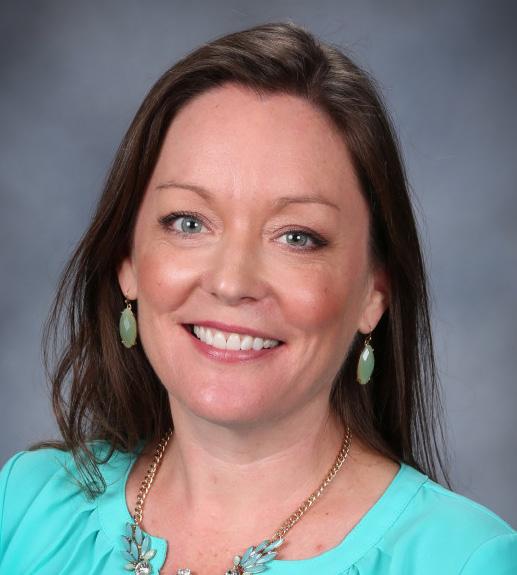

Brother Michael Fehrenbach, FSC, is Lasallian formation coordinator for the Midwest District. His tour of duty has run the gamut, from a working-class school in Nebraska to the hard neighborhoods of inner city Chicago. All along, he says,
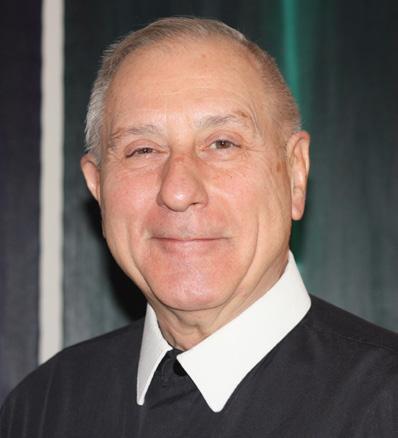
he has been driven by the conviction that, “Kids need the skills to survive in the world. We have to provide a quality academic experience for kids no matter what their capabilities are. Every child can learn.”
Dr. Angel Gonzalez is acting principal of De La Salle Academy, a New York City middle school serving academically talented, economically less advantaged students. He also is an alumnus of the school who entered the Lasallian world as many of our students do. “Our family came as immigrants to this country from Colombia. My folks wanted a quality school that would challenge me. I knew De La Salle would be great academically, but what I got out of it—the community, the love, the service—that was something I hadn’t expected.”
16 | DE LA SALLE TODAY 2019: YEAR OF LASALLIAN VOCATIONS
In the Lasallian Region of North America (RELAN), this salvific vision of Lasallian ministry finds expression in a variety of educational works.
BROTHER MICHAEL FEHRENBACH, FSC
DR. ANGEL GONZALEZ
16 | DE LA SALLE TODAY 2019: THE YEAR OF LASALLIAN VOCATIONS
MARILYN PAQUETTE
Courtesy (top left) Brother Michael Fehrenbach, FSC, (top right) Lifetouch, (bottom) Yefry Mejia
Marilyn Paquette is a former Lasallian Volunteer and principal of De La Salle Academy, a San Miguel middle school in Concord, California, where she arrived after an unexpected invitation to be its first principal. “My personal transformation,” she said, “started when I found myself willing to serve in a role like that of founding principal. I draw inspiration from Saint La Salle’s ‘one commitment led me imperceptibly to another.’”
At first glance, the word “transformative” may seem a standard-issue description for a Catholic educational tradition. However, while all Catholic religious education may have as its goal human transformation, the Lasallian approach to that goal comes from a unique understanding of both religious community and commitment to mission that gives it certain distinctive core characteristics.
“The fact that Lasallian education is rooted in faith is an absolutely significant piece,” insisted Brother Michael. “Our history of association is about people coalescing together around faith, always for the sake of something else, and the something else is transformative education.”

For Gonzalez, his middle school days revealed another key quality. “It was the experience of being surrounded by caring adults,” he recalled. “That transformative aspect was a key … the amount of work that was put in by the whole school to form me.”
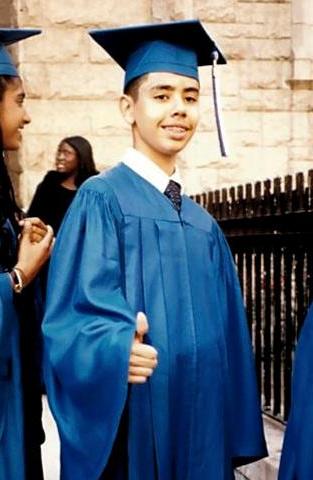
Paquette’s Lasallian understanding boils down to yet another central characteristic. “It’s that we choose to work with children on the margins,” she said, “because we are convinced that if a young person receives a quality education, it can provide an opportunity to break the cycle of generational poverty for that young person.”
If these characteristics sound familiar, it is because Lasallians everywhere might recognize them in three iconic words from the Lasallian glossary: faith, community and service. These hallmarks are the instruments for teaching minds and touching hearts, defining the Lasallian ethos and driving the transformative experience for students. And the transformation does not stop with them.
“The colleagues I serve with are transformed by the growth we witness,” Paquette remarked. “When we pause and reflect, we also see the growth in ourselves. You can’t help but be transformed by this work. It calls you to give more than you think you can.”
“Colleagues start to see the difference between a job and a vocation,” Gonzalez added. “They want to be part of the kids’ lives, and they also let the kids into their lives, allowing themselves to be transformed.”
The Region’s ongoing efforts to bring this transformative educational experience to as many young people and adults as possible has taken it and its educational leaders to special and even unexpected places. For example, consider a day in the early 2000s when a group of Brothers in Chicago were approached with an extraordinary invitation.
17 | DE LA SALLE TODAY 2019: YEAR OF LASALLIAN VOCATIONS
(Below left) Marilyn Paquette served as a Lasallian Volunteer (LV) at The San Miguel School of Providence from 1999-2001. From left, Marilyn Paquette, Brother Lawrence Goyette, FSC, LV Trish Reichenberger (Hunter), Brother Michael McLoughlin, FSC, and the late Brother Charles Kitson, FSC. Not pictured: Brother Kevin Junk, FSC. Courtesy Brother Kevin Junk, FSC
Dr. Angel Gonzalez graduated from De La Salle Academy in New York in 1999. Courtesy Gonzalez family
The invitation came from the CEO of Chicago Public Schools, and it was for the Brothers to replicate their San Miguel school model for a public charter school that would be called a Catalyst school. At first, the Brothers declined the invitation to collaborate with the public school system, concerned about not including faith as a basis of the school. However, they would eventually determine that the arrangement could work and, within a few years, help to open several successful Catalyst schools.
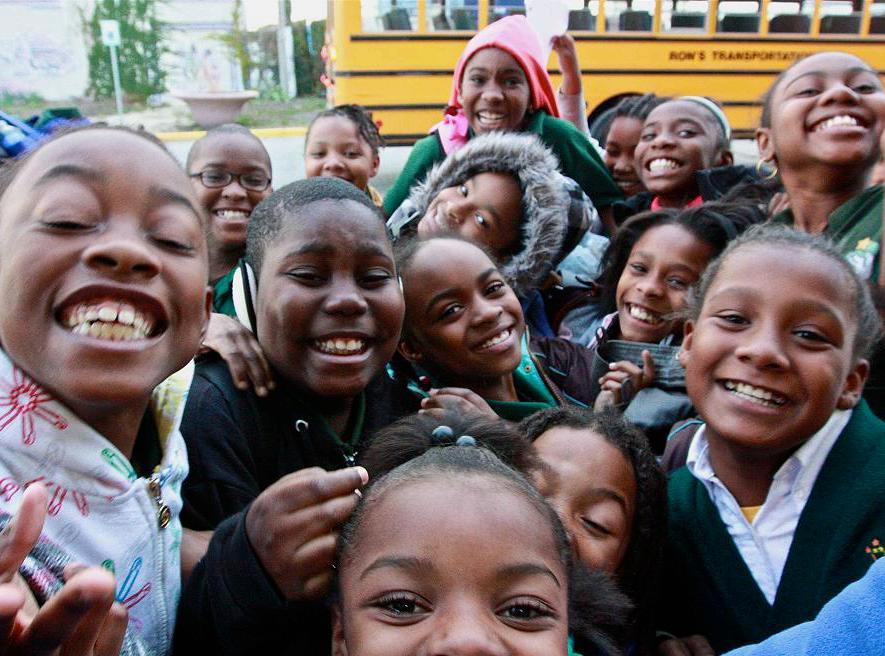
For the Brothers, the decision-making process that led to bringing the Lasallian charism to students outside of Lasallian Catholic schools required them to reflect on the charism with a new openness. One insight that they gained from their Catalyst school experience was a recognition of how the foundations of Lasallian education can move it to transcend even its own institutional boundaries.
“I know it’s alternative to what the most recent tradition looks like,” Brother Michael explained about the Catalyst approach, “but you can’t get stuck in the last hundred years. It seemed very consistent with how we understood what Saint John Baptist de La Salle was
all about. There was a need that presented itself, and we just thought we could help.”
With centuries of having to face both internal and external changes, one might wonder what accounts for the steady resilience and relevance of the Lasallian tradition. “It’s because we are not focused on teaching subjects; we are focused on teaching students,” Paquette suggested. “With a ‘Lasallian lens,’ there is no doubt we view education as so much more than a student’s academic success.” Gonzalez concurred, saying, “It’s about knowing the kids well enough to maximize their gifts, knowing their social context, and then really drilling down and knowing the kids as the center of what we do.”
To truly appreciate and celebrate Lasallian education, we asked our three Lasallians to ponder the unhappy question of what would be lost if it ever were to end. Their thoughts all pointed in the same direction: to schools as places of salvation.
 (Left) Brother Michael Fehrenbach, FSC, celebrated his 50th jubilee in 2015. Courtesy Brother Michael Fehrenbach, FSC
(Below) Catalyst students arrive back to school after a field trip. Courtesy Brother Michael Fehrenbach, FSC
(Left) Brother Michael Fehrenbach, FSC, celebrated his 50th jubilee in 2015. Courtesy Brother Michael Fehrenbach, FSC
(Below) Catalyst students arrive back to school after a field trip. Courtesy Brother Michael Fehrenbach, FSC
“We’ve always been about the salvation of youth,” reflected Brother Michael. “How do we instill in kids the encounter with Jesus so that they begin to see in themselves what we see in him? That divine spark exists in each of us and, when we believe that, we live differently. It’s about introducing people to their best selves.”
“The biggest loss,” said Gonzalez, “would be around the sense of ‘purposeful rigor,’ of challenging the whole child to all that they can be. We’re not a onesize-fits-all education. We’re about accompanying the child, not just as teachers but as human beings, educating both the mind and the heart, but most importantly the heart.”
Paquette also stressed this intentional saving relationship, concluding, “If the Lasallian tradition were to vanish tomorrow, many young people would go to school without finding a place where they can learn, flourish, be challenged, grow, and go out to serve. I think that is something so greatly needed in our world today … for our students to know they matter, to know they are created by God, that they are unique and have a purpose.”
Association for the transformative human and Christian education of the young, especially the poor. Words that describe what the world needs done.
Words that describe what Lasallians will always find a way to do. •
Bob Carrejo is director of communications for the District of San Francisco New Orleans.
QUESTIONS FOR REFLECTION
1. Is there a quotation from the experiences these educators shared that resonates with your own experience?
2. The religious dimension of community and commitment to mission are identified as core Lasallian characteristics. How are these lived out in your setting? What would you add as core to your experience of what it means to be Lasallian?
3. The article points to a “Lasallian lens” at the heart of how we educate young people, by knowing them personally. How do you relate to this? How are you challenged to better educate not only young people’s minds, but their hearts as well?

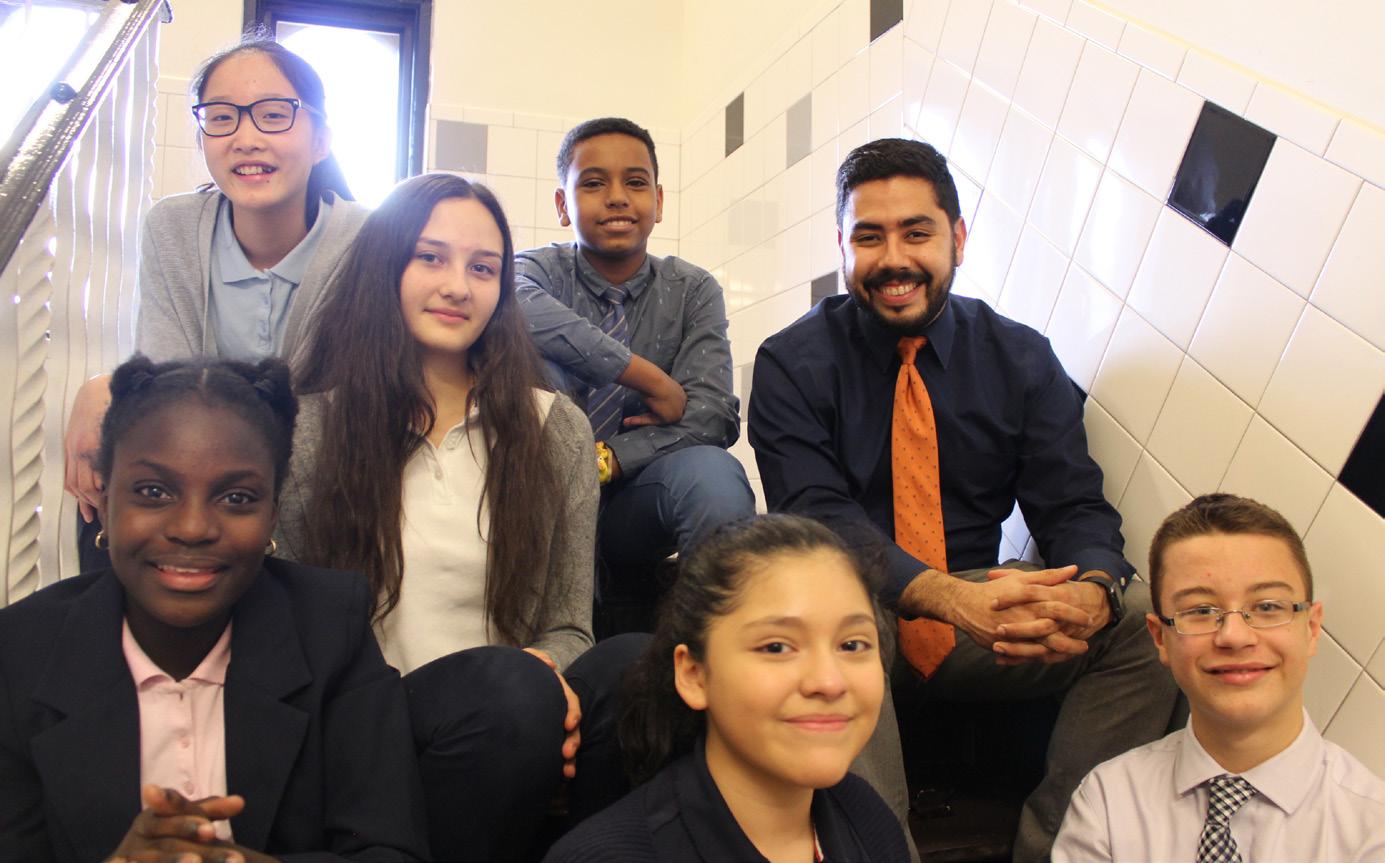 Marilyn Paquette, second from left, is the founding principal of De La Salle Academy in Concord, California. Courtesy Brother Lawrence Haley, FSC, De La Salle Academy, Concord
Dr. Angel Gonzalez, pictured with his eighth grade American Studies students, now teaches at his alma mater. Courtesy Soobin Lim
Marilyn Paquette, second from left, is the founding principal of De La Salle Academy in Concord, California. Courtesy Brother Lawrence Haley, FSC, De La Salle Academy, Concord
Dr. Angel Gonzalez, pictured with his eighth grade American Studies students, now teaches at his alma mater. Courtesy Soobin Lim
RESPONDING TO THE NEEDS OF TODAY
BY ANNA WADDELOVE
AS WE LOOK BACK AT THE MORE THAN 300-YEAR LEGACY STARTED BY SAINT JOHN BAPTIST DE LA SALLE, WE ALSO NEED TO LOOK AT THE PRESENT AND EXAMINE THE SIGNS OF THE TIMES IN OUR CONTEMPORARY WORLD THAT NEED OUR LASALLIAN RESPONSE.
In order to understand how we are responding, we asked Lasallians from across the global family questions relating to young people on the margins, changing demographics, faith formation, the environment, and access and affordability. Through these responses, we are renewing our commitment to the Lasallian mission and looking to the next 300 years.
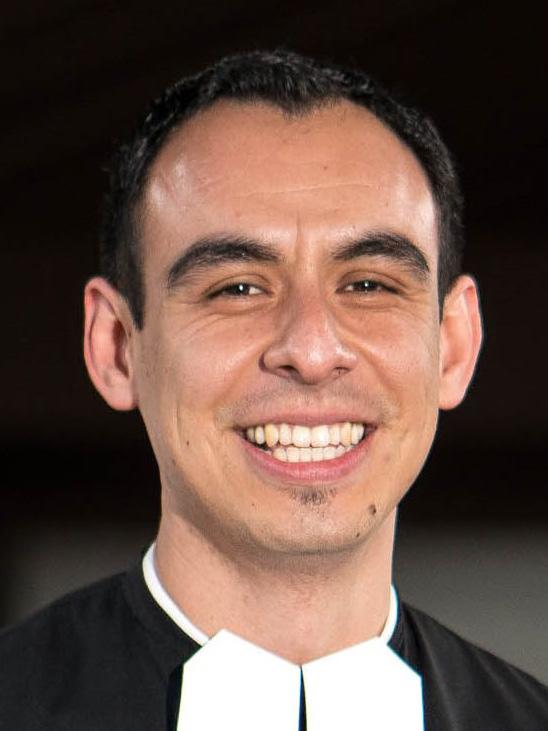
PHILIPPE BLAIS Animator, Centre Notre-Dame de la Rouge, Grenville-surla-Rouge, Québec, Canada

LYNDA DI
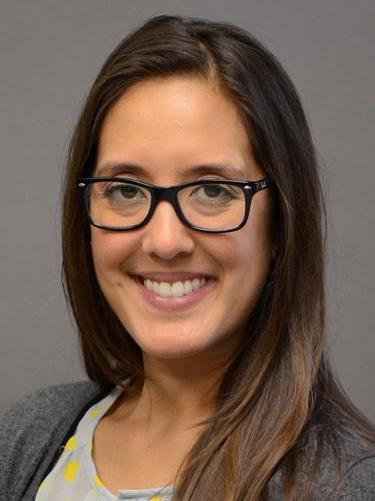

Vice Principal, De La Salle College "Oaklands," Toronto, Ontario, Canada

California

20 | DE LA SALLE TODAY 2019: YEAR OF LASALLIAN VOCATIONS
PROSPERO
ALISA MACKSEY Executive Director, First Generation Initiative, Saint Mary’s University of Minnesota, Winona
BROTHER CHRIS PATIÑO, FSC Director of Vocation Ministry, District of San Francisco New Orleans, Napa,
PETER STEMP Associate Director, De La Salle Solidarietà Internazionale –ONLUS, Institute of the Brothers of the Christian Schools, Rome, Italy
JOHN VITEK President and Chief Executive Officer, Saint Mary’s Press, Winona, Minnesota
Courtesy, from left: Centre Notre-Dame de la Rouge, De La Salle College "Oaklands," Deb Nahrgang, Saint Mary's College of California, Institute of the Brothers of the Christian Schools Communications Service, Emilie Ng
HOW DO
Peter Stemp: Lasallians respond to the needs of children through an integral education and a participative approach. Educational programs are not limited to ordinary academic courses, rather they are planned to respond to the educational needs of our students, in harmony with the local communities in which we work. For example, in South Sudan, a country battered by civil war, Lasallians are present to bring the hope of a bright future for youth and the community. We are responding to this urgent need by building a new secondary school in the town of Rumbek. Students will develop into educated, responsible and compassionate members of their local communities, who will become active citizens and leaders in forming South Sudan’s future.
Philippe Blais: As educators, we want to prepare youngsters to be factors of change in their environment. If we sensitize them
to margins around them, we can make a bigger difference than if we try to do it alone. For example, Centre Notre-Dame de la Rouge, a summer camp with a pastoral approach, invited a group of young adults with physical and intellectual disabilities for one day of activities. Our participants of the camp loved this day with them. They played together, discussed together, laughed together. At the end of the day, everybody was happy. The group left the camp with the feeling of being accepted. Our participants felt like they made a difference and learned they can make a difference even outside the camp.
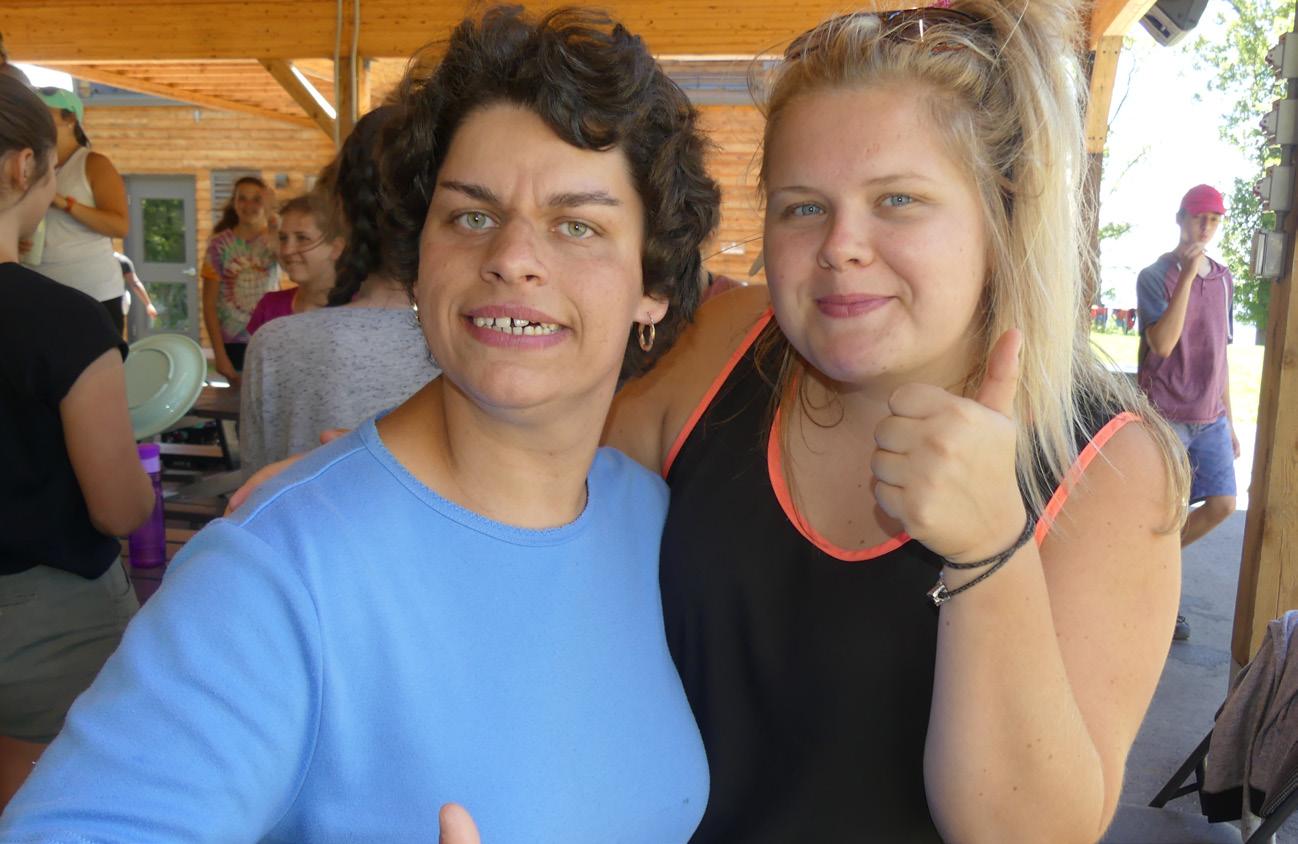
WHY DO WE, AS LASALLIANS, HAVE A RESPONSIBILITY TO HELP THESE YOUNG PEOPLE ON THE MARGINS?
Philippe Blais: Because it is why we exist, it is in our DNA, it is our mission. During John Baptist de La Salle’s time, the people on the margins were the ones with no access to education. Lasallians gave them that education. Then Lasallians provided education to another group on the margin: girls. From our foundation, we take care of and educate those who may be perceived as less important than others. We have climbed so many steps as Lasallians, we cannot just sit down and be happy. What are the

YOU FEEL LASALLIANS ARE RESPONDING TO THE NEEDS OF YOUTH WHO ARE INTELLECTUALLY, CULTURALLY, SOCIALLY OR PHYSICALLY ON THE MARGINS?
La Salle Secondary School in Rumbek, South Sudan, offers a holistic approach which integrates child rights, trauma counseling and relevant education to provide students with sought-after skills. Courtesy La Salle Secondary School
Youth at Centre Notre-Dame de la Rouge host young adults with physical and intellectual disabilities for a day of activities during the 2018 summer camp. Courtesy Centre Notre-Dame de la Rouge
RESPONDING TO THE NEEDS OF TODAY CONTINUED
next steps to climb to be sure we take care of young people on the margins? I think we do a good job, but the margins are moving and are changing. To give a complete meaningful education, we need to be aware of where those margins are. If we do not try, we are not assigning the same importance to all God’s children … and this would not be Lasallian.
IMMIGRATION, MIGRATION AND REFUGEES ARE A KEY FACTOR IN CHANGING DEMOGRAPHICS ACROSS THE GLOBE. HOW ARE LASALLIANS RESPONDING TO THESE ISSUES?
Brother Chris Patiño, FSC: The call to go “beyond borders” from the Center of the Institute and the Church’s own commitment to migrants and refugees, specifically as modeled by Pope Francis, calls us to deepen our commitment to our migrant brothers and sisters. My personal experience with the El Otro Lado program in Tucson, Arizona, (and its recent expansion to El Paso, Texas) is an example of a Lasallian response to these issues. Through an educational immersion program that fosters a culture of encounter, young people and Lasallian educators have the opportunity to better understand the complexity of our immigration system in the U.S. and the lives of those affected.
ACCORDING TO LASALLIAN
REFLECTION 3, LASALLIANS WITHOUT LIMITS, ONE-THIRD OF MILLENNIALS IDENTIFY AS “NON-MEMBERS” OF A RELIGION. WITH SO MANY YOUNG PEOPLE STRAYING FROM RELIGION, WHAT ARE LASALLIANS DOING IN REGARDS TO FAITH FORMATION?
John Vitek: De La Salle understood young people in the context of their social realities. For us to be effective in our Lasallian education, we must recognize the epochal shift in culture in the United States (and throughout the western world) that is a game-changer in terms of how we think about things like “evangelization” and “religious formation” with young people. For the last 60 years or so we’ve thought about faith as something that is “handed down” from generation to generation. This is an outdated paradigm that doesn’t match up with how people in contemporary culture relate to religion and religious experience. Young people seek connection, purpose and validation of their self-identity. The key thing to understand is that young people “construct” their religious identity, they don’t blindly accept the handing down of a tradition. In fact, they see that as something “being

forced on them,” and that is hugely distrusted. So, if people today (especially young people) “construct” their own religious identity from a host of available choices (e.g., yoga practice, CrossFit, the “dinner club,” etc.), how do we as Lasallians come alongside them in the process of construction and what do we have to offer that would be compelling enough for a person to want to incorporate it into their sense of identity? I think there is one huge thing that the Lasallian community does incredibly well and is a reason why the Lasallian schools offer something young people often don’t find elsewhere: As Lasallians, the most important thing we can do for a young person— the most profound impact we can have on a young person’s process of constructing their self-identity —is to know them by name, to know their heart, to know their experiences, and to be present in such a way that they know beyond a shadow of a doubt that we would miss them if they were gone!
progressive introduction of solar energy plants and recycling plants; food sustainability and security programs.
HOW ARE LASALLIANS CONTINUING TO CARRY OUT THE FOUNDER’S GOAL TO MAKE EDUCATION ACCESSIBLE AND AFFORDABLE?
Alisa Macksey: Lasallian schools continually look for ways to address this issue. All Lasallian colleges and universities in the United States have some sort of program to make higher education accessible to a broad range of students. For example: the TRiO program (which supports higher education efforts that motivate and prepare underrepresented students on college campuses for academic success and graduation) at Saint Mary’s College of California; the First Generation Initiative (which ensures academic success for high-need, high-potential, first-generation students) at Saint Mary’s University of Minnesota; the Latino Success Program (a program for Latino immigrants to "level the playing field" and make higher education accessible to immigrant students) at Christian Brothers University; and the Summit Program (a rigorous academic preparation program that provides structured support within a challenging academic setting to targeted first-year students) at La Salle University are just a few examples of Lasallian institutions making higher education accessible.
Peter Stemp: Starting from the schools in which we operate, we develop programs to respond to the needs of the local community, promoting a conscious use of resources. We are committed to responding to local needs in a sustainable way: the construction and rebuilding of water supply plants in schools for students and the local community; the
In K-12 institutions, the Miguel-model schools across the country continue to make private Catholic education affordable. They also prepare students for high school and college. All Lasallian secondary schools in the United States provide generous financial aid to high-need students to ensure accessibility and affordability to families.
23 | DE LA SALLE TODAY 2019: YEAR OF LASALLIAN VOCATIONS
POPE FRANCIS SAID IN LAUDATO SI’ THAT “CARE FOR THE ENVIRONMENT IS A MATTER OF INTERGENERATIONAL JUSTICE.” WHAT ARE LASALLIANS DOING IN REGARDS TO THIS CARE TO BENEFIT FUTURE GENERATIONS?
(Left inset) Students from Cathedral High School in El Paso, Texas, and Justin-Siena High School in Napa, California, participate in the El Otro Lado program in November 2016. Courtesy Cathedral High School
Brother Chris Patiño, FSC: Through creative partnerships and models, such as the Cristo Rey model and Catalyst Charter schools, along with the ongoing commitment to scholarships and financial aid for families from limited means, the Lasallian mission is seeking to make education accessible and affordable. Additionally, the commitment to the twinning program [which pairs schools in our Region with ministries in Africa] allows Lasallian schools in the U.S. and Canada to support accessibility to education at the international levels as it draws the Lasallian family closer together.
WHAT ARE SOME EXAMPLES OF HOW LASALLIANS ARE PROVIDING PRACTICAL AND PROFESSIONAL EDUCATION?
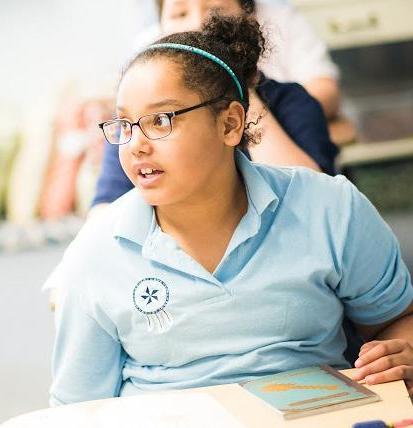
Lynda Di Prospero: As we instill the Gospel values of love, service, stewardship and accompaniment, our institutions demonstrate a fervent message of an unbiased, unprejudiced commitment to a rightful education to all youth. A testament to that Lasallian pursuit of affordable education is the fidelity by visionaries to safeguard scholarships,
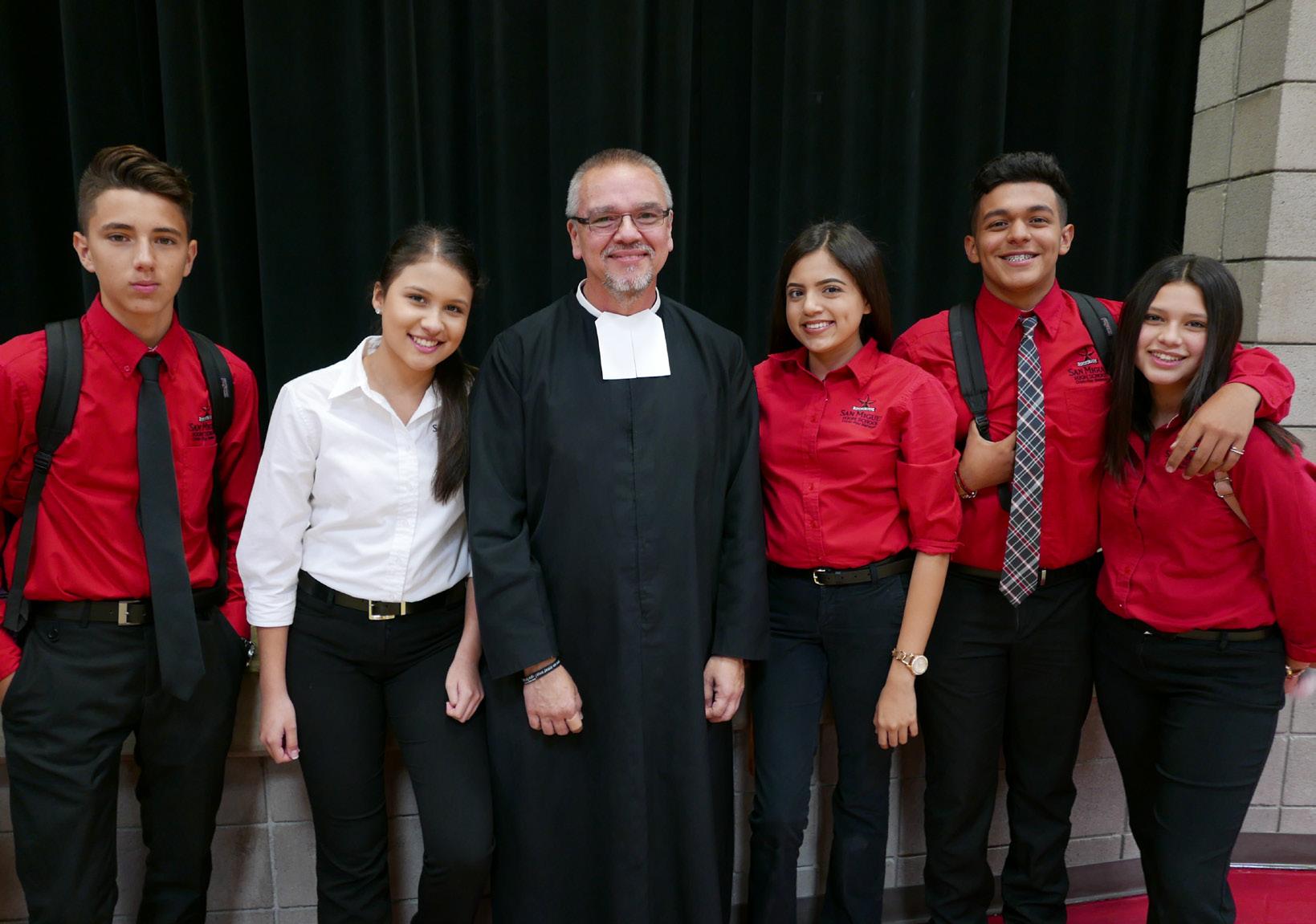
donations, endowments, grants, sponsorships, aids and supports. These allow the continuance of justness in educational opportunities and pursuits by all youth. Evidence of these successes can be recognized in the various Lasallian training programs which include: rehabilitation services, integrational education, service-oriented project work, child care for orphans, professional development workshops, induction programs, women’s educational programs, education and training for sustainable environments. These remarkable examples serve to demonstrate the outstanding commitment to innovative, relevant, practical and professional education. •
Anna Waddelove is the communications specialist for Christian Brothers Conference.
QUESTIONS FOR REFLECTION
1. What do you see as “signs of the times” Lasallians are/need to be addressing? How do you/ your school community give attention to these areas?
2. What “borders” exist for you personally and in your community that you need to move beyond?
3. A number of creative responses to the pressing needs of today are mentioned. What are creative responses in your community? What new efforts could you support?
San Miguel High School in Tucson, Arizona, is a Cristo Rey-model school. Courtesy San Miguel High School
A student participates in class at De La Salle Blackfeet School, a San Miguel-model ministry in the home of the Blackfeet Nation in Browning, Montana. Courtesy Eric Connolly Photography
FORMATION: TRANSMITTING THE LASALLIAN CHARISM
 BY BROTHER TOM JOHNSON, FSC
BY BROTHER TOM JOHNSON, FSC
One of my favorite stories is about a young man who entered a monastery. Very soon afterward, he began to notice and to be dismayed by the fact that many monks were leaving the monastery. Troubled and confused, he went to the abbot. Why, he asked, did some men, after having committed themselves to a way of life, forsake it for something else? The abbot responded with a story:
Once upon a time, a dog lay sleeping in the warm sun of the village square. All of a sudden, out of the corner of his half-opened eyes, he spied a rabbit darting across the road. He took off immediately in hot pursuit. He ran up and down the streets and through the countryside, keeping up the chase day and night and seeming never to tire. Eventually, other dogs saw him and joined the run. But, one by one, they grew tired and stopped running. Why? They were running only because they had seen the first dog doing so. They had never caught sight of the rabbit in the first place. So, the abbot concluded, the one who has never glimpsed the vision grows easily tired of running. He gives up the chase because he cannot remember why he had begun to run in the first place (Irvin Boudreaux, “My Dog Saw the Rabbit,” A Pastor’s Thoughts, July 14, 2014, https://ijboudreaux.com/2014/07/29/my-dog-saw-the-rabbit/).
This little story is full of wisdom about vision and mission. It demonstrates in a parable the importance of having a vision and a mission before us. The Lasallian mission, as stated in the Rule of the Brothers of the Christian Schools, exists “to provide a human and Christian education to the young, especially the poor, according to the ministry which the Church has entrusted to it.”
INTERNALIZING THE MISSION
As Lasallians, we work day in and day out in the mission, but if we do not internalize it and let it become part of ourselves, it might soon just become work. This process of internalization is what formation is about. It helps us to develop a common and explicit vision that enables us to understand ourselves and how we relate to the mission and ministry we share—this way, we remember why we began to run.
25 | DE LA SALLE TODAY 2019: YEAR OF LASALLIAN VOCATIONS
Formation imparts the charism and helps Lasallians view their work as a vocation. Courtesy Lewis University
FORMATION: TRANSMITTING THE LASALLIAN CHARISM CONTINUED

The term “charism” means a God-given gift for the sake of others. We all have charism, and each religious congregation has a charism. Brother John Johnston, FSC, wrote the Lasallian charism “is to make the loving and saving presence of Jesus Christ a visible and effective reality in the world of education, in the world of the young” (Brother John Johnston, FSC, Living Authentically in Christ, Pastoral Letter, 1994).
The goal of formation is to pass that charism on to others so that they can discern if their personal gifts, or charism, are a match with the charism of the community they are joining (adapted from Michael Casey, OCSO, The Art of Winning Souls, Liturgical Press, 2010, 28). I believe this description of formation applies to Brothers as well as Lasallian Partners.
BEYOND THE FACTS
Formation is more than information. Reading about De La Salle’s life and the mission statement of your ministry can provide information, but that is not enough. Formation imparts the charism and moves us from seeing our work in a Lasallian ministry as a job to seeing it as a vocation. John Baptist de La
Salle made this vocational vision of education the centerpiece of his writings.
The question arises about what constitutes formation. The purpose of this article is to name some aspects of formation as I see it. First, however, we have to realize formation is not “one size fits all.” The participants in the formation determine much of what happens in formation.
I am involved in formation of young Brothers. These men are discerning a lifestyle and a commitment. They explore their possible vocation by interacting with Brothers, participating in service and community life, learning about religious life and the Lasallian mission, and, ultimately, taking part in our yearlong novitiate where they are offered the opportunity for deep discernment and spiritual development.
Other Lasallians may find themselves on a lifelong journey but that is not the intent of the formation they experience. Formation emphasizes different aspects depending on whether the participant is a teacher, staff member, administrator or board member. I believe there are components of formation that apply to all. I aim to cover some of them here.
Brother Tom Johnson, FSC, left, serves as director of the novitiate. Courtesy James Hannon
Components of formation, whether for Brothers or Lasallian Partners, are both external and internal. The external are primarily information. The internal elements concern our development as persons.
INTERNAL COMPONENTS OF FORMATION
• Self-Knowledge: Formation includes deepening our own self-understanding. We come to know our strengths and to embrace our weaknesses. With reflection and self-knowledge, we recognize our defensiveness, what triggers anxiety, and how to integrate all human aspects in ourselves. Sometimes tools such as Myers-Briggs and Enneagram can help us understand ourselves. Often journeying with others can be a part of a journey of self-discovery.
• Worldview: Recently, I heard of two Lasallians coming to this Region to explore and participate in the mission here. They remarked that it was hard to commit themselves because each ministry had a drawback; at one place, they did not like the neighborhood; at another, they did not believe in single-gender education. The list goes on. But the reality is the Lasallian mission is carried out differently in different places. If one keeps his or her limited worldview, an important part of the charism is missed.
The story of De La Salle is the story of widened horizons. Our connection with his story and with others in formation helps us to put aside our provincial views and see others and the world with a broad perspective. Formation helps to create a new way of looking at the world. It involves our inner life of knowing, remembering, willing, feeling and imagining. It also involves our inter-relational life: our family, our school and our community. We try
to understand the cultural differences among our students and understand that the Lasallian world is larger and more complex than our particular ministry.

• A Change of Heart: The theme of heart is recurring in De La Salle’s writings. We are very aware of the idea of touching hearts through which we can perform “miracles.” We conclude each prayer with “Live Jesus in our hearts.” Yet, we must have a change in our own hearts to touch hearts and have Jesus in our hearts. Changing of our hearts is a major component of formation. This helps us to see the perspective of our colleagues, our students and our leaders. A change of heart helps us to look beyond rules—important as they are—to the individual. It helps us go the “extra mile” now and then to help colleagues or students.
• Spiritual Growth: Formation is about knowledge, relationships and actions, but most of all, it calls us to deepen our spirituality, to change our hearts by being self-reflective and living more and more for others. One of the gifts of Lasallian formation is the emphasis on faith and zeal. The zeal that formation may encourage is guided by faith that is essentially a trust in God. We have Lasallians of various religious traditions, but I believe that faith, common to all traditions, is a basic trust that God is with us for life. Lasallian formation includes prayer or reflection regardless of—but respectful of—one’s own religious traditions. In some places of the world, we can have Buddhist, Hindu and Muslim Lasallians who can find through their own traditions meaning in the Lasallian tradition.
27 | DE LA SALLE TODAY 2019: YEAR OF LASALLIAN VOCATIONS
27 | DE LA SALLE TODAY 2019: THE YEAR OF LASALLIAN VOCATIONS
The District of Eastern North America offers a formation experience for Young Lasallians, called VEGA, to help immerse them in the Lasallian mission. Courtesy District of Eastern North America
EXTERNAL COMPONENTS OF FORMATION
Formation does include an informational component. Those formed in the Lasallian charism need to have knowledge of Lasallian history, present reality and educational experience. Here are some knowledge-based components that I call external.
• Factual Information: We need information of the founding story of John Baptist de La Salle, his recognition that he was called to go beyond his vocation as a priest and cathedral canon in his conversion. This is not only information, but also a changing of the heart, the vision and very soul of the hearer.
• Accompaniment: Formation for association is reflected first in accompaniment, journeying with others, being part of a community, and being committed to the mission and others working in the mission. Formation is not solitary but communal. Formation is done together locally, in Districts, Regions and internationally. Being a Lasallian implies association with others.
• Education Ministry: Lasallian spirituality is educational spirituality lived out in a particular educational ministry. De La Salle’s writings, especially the Meditations for the Times of Retreat and his Conduct of Christian Schools, give us an underpinning for how
we interact with students, actually teach classes, and how we ought to correct rather than punish when dealing with student behavior issues. We learn

and appreciate that our school cultures must reflect our charism where all can feel at home while learning and being encouraged to excel.
• Invitation: Formation is not for us alone. Like the apostles, we are filled with zeal not simply to build up our numbers but for the sake of others who may be nourished by the Lasallian charism. We owe it to young men to invite them to consider the Brother’s vocation and to our colleagues to consider Lasallian formation because the invitation may awaken a call that is in them.
Formation is not merely knowledge. It is relationships and methods and, most of all, it attempts to bring forth internal change. With the vision, we will not give up the chase. •
Brother Tom Johnson, FSC, is the director of the RELAN Novitiate. He served as Vicar General for the Institute of the Brothers of the Christian Schools from 2007-2014.
QUESTIONS FOR REFLECTION
1. We use the term “formation” regularly as Lasallians. Did you take away any new insights about the aims of formation from this article?
2. What Lasallian formation have you experienced? How has it invited you to more deeply internalize the Lasallian mission?
3. How do the internal and external components of formation resonate with your experience?
28 | DE LA SALLE TODAY 2019: YEAR OF LASALLIAN VOCATIONS
28 | DE LA SALLE TODAY 2019: THE YEAR OF LASALLIAN VOCATIONS
Formation experiences help give educators a deeper understanding of the Lasallian mission, on which they rely in their interactions with students. Courtesy De La Salle High School, New Orleans
THE INFLUENCE OF WOMEN IN THE LASALLIAN MISSION
 BY MARYANN DONOHUE-LYNCH
BY MARYANN DONOHUE-LYNCH
WhenSaint John Baptist de La Salle lay on his death bed on April 7, 1719, he had perhaps one hundred men committed to this new educational venture. Today, there are more than 90,000 Lasallian Partners worldwide, the majority of whom are women.
Women continue to inspire, create and revitalize the Lasallian mission, even as women were key in the early founding and sustaining of the Institute from its beginning. The scope and the potential of this change was reflected in 2010 in words from Circular 461: Associated of the Lasallian Mission…an act of HOPE, “Just as more recently the education of both young men and women became the focus of the Mission so has the participation of women in the Lasallian educational network become essential. Their presence, undoubtedly, will help to construct a more humane and community-centered society; help to reexamine ways of thinking; help to situate the entire Lasallian world a bit differently in history
and help to organize social, political, economic and religious life in a way that can be more intuitive and relational” (1.14).
Our Lasallian heritage is comprised of people who viewed life’s events through the eyes of faith, were discerning of the wisdom revealed in a “divine encounter,” and strived to be faithful to the promptings of God in their life.
The roots of the fundamental role of women can be found in the earliest accounts of influential people and relationships in the life of John Baptist de La Salle.
29 | DE LA SALLE TODAY 2019: YEAR OF LASALLIAN VOCATIONS
Manhattan College offers support to young women through the Lasallian Women and Gender Resource Center. See page 33 for more information. Courtesy Josh Cuppek
THE INFLUENCE OF WOMEN IN THE LASALLIAN MISSION CONTINUED

This is a story that from the beginning is about such key people and encounters whose own lives, influence and inspiration are essential in understanding the Founder’s relationship with God and the decisions he made by viewing all things through the eyes of faith.
THE GROUND IS TILLED FOR THE SEEDS OF FAITH: PERRETTE LESPAGNOL, MATERNAL GRANDMOTHER
Perrette Lespagnol was 36 years old when De La Salle was born April 30, 1651. As his grandmother and godmother, she was a lifelong source of guidance and support. From the biographies of De La Salle, we know that she would read to him stories from the Lives of the Saints and teach him his prayers. Perette was active in the “social justice” causes of her time, and there is no doubt this had an influence on her grandson. When De La Salle suddenly found himself responsible for the care of his six orphaned younger brothers and sisters, she was the one who agreed to take them into her home until such time as he could attend to this new responsibility. She supported and encouraged him in his growing involvement with the establishment of schools and later with the community of Brothers. When his other relatives openly complained about his vocational decisions, her support of him never wavered.
When Perrette Lespagnol passed on October 7, 1691, she left De La

Salle a generous legacy to support his developing educational works.
THE SEEDS OF FAITH ARE PLANTED: NICOLLE MOËT DE BROUILLET, MOTHER
Nicolle Moët de Brouillet married Louis de La Salle in August 1650. Louis de La Salle was a distinguished magistrate of the presidential court at Reims, who was highly respected, a devout Catholic, and known for his works of mercy and service.
Nicolle was born into French nobility to a family noted “even more for its piety than for its nobility” (Jean-Baptiste Blain, The Life of John Baptist de La Salle, vol. 1, trans. Richard Arnandez, FSC, Romeoville, IL: Christian Brothers Conference, 1983, 3). In marrying Monsieur De La Salle, she gave up title and prestige but gained a life partner in faith and family. Throughout De La Salle’s life, we see the influence of his mother’s love and sacrifice perhaps reflected in his selfless acts of giving up his canonry to take care of the schools and giving away his inheritance during the great famine. The biographer, Blain, attributes to Nicolle the deep sense of the presence of God that was later to become an important element in the spiritual vision of her eldest son (Leon Aroz, FSC, Yves Poutet, FSC, Jean Pungier, FSC, Beginnings: De La Salle and his Brothers, trans., ed. Luke Salm, FSC, Romeoville, IL: Christian Brothers Conference, 1980, 81). This abiding sense is at the core of De La Salle’s trust in
Divine Providence, a trust reflected in his own life as well as the spiritual life of the early Institute.
THE PLANT BEARS FRUIT: MADAME MAILLEFER, BENEFACTRESS
Madame Maillefer was a benefactress for the Sisters of the Infant Jesus and wanted to establish a similar school for poor boys in her home town of Reims. “Since it was Madame Maillefer who began crystallizing the plans of Providence in the life of Monsieur de La Salle, we should look upon her as the first instrument God was pleased to make use of to bring the Institute of the Brothers of the Christian Schools into existence” (Blain, The Life of John Baptist de La Salle, vol. 1, 48).
Madame Maillefer sought out a man who was well known for his expertise and zeal in establishing schools, Monsieur Adrien Nyel. She entered into an agreement with Nyel to be the benefactress of the new school. Upon his arrival at the convent of the Sisters of the Infant Jesus, Nyel carried with him two letters of introduction: one for Mother Françoise, Superior, and one for De La Salle. It was on the doorsteps of the convent that on March 15, 1679, Adrien Nyel encountered De La Salle for the first time.
AN INTRODUCTION ARRANGED BY DIVINE PROVIDENCE: MOTHER FRANÇOISE DUVAL
Mother Françoise Duval welcomed both men into the convent and introduced Nyel to De La Salle. The next invitation of generous hospitality was a decision that would change the life path of De La Salle, although he had no way of knowing it. Blain, De La Salle’s biographer, reconstructs the response of De La Salle to Nyel in these words, “Come and live with me for
a while … The house is large enough, and parish priests from the countryside often come there … You look something like a parish priest from the country and people will think you are one of them”
(Aroz, Poutet, Pungier, Beginnings: De La Salle and his Brothers, 13). The two met for over a week, consulting other trusted advisors regarding the school project. Thus, the first Christian school for boys opened April 15, 1679, on the Rue Saint Maurice in the parish of the same name. The vision, the hope, the dream that God inspired through the faith of Madame Maillefer had become a reality.
THE PLANT GROWS DEEP
ROOTS: CATHERINE DES CROYÈRES, BENEFACTRESS
Catherine des Croyères was an influential woman, widowed, wealthy and pious, who also was a benefactress of the Sisters of the Infant Jesus. When she confided to Mother Françoise that she was suffering from a terminal illness and that her last wish was to establish a school for poor boys, Mother Françoise made arrangements for Catherine to meet with Nyel. The meeting did not go as planned. Catherine was aware of De La Salle, who she learned had been involved in the opening of a school, and therefore requested a meeting with him. She was more than impressed with De La Salle and insisted that he be involved in the establishment of the school. De La Salle agreed to take primary responsibility in the establishment of the parish school at Saint James, which opened September 1679. De La Salle‘s commitment to become more involved in the establishment of schools and the formation of teachers set his life on a course he could not have imagined but the seeds of faith were bearing new fruit.
31 | DE LA SALLE TODAY 2019: YEAR OF LASALLIAN VOCATIONS
DO NOT ABANDON THE HARVEST: SISTER LOUISE HOURS, MYSTIC
February of 1714 was a time of deep spiritual unrest for De La Salle. He sought sanctuary at a monastery in Parménie where he encountered Sister Louise Hours. In her youth, she was a shepherd girl who answered a call from God to rebuild the abandoned monastery at Parménie. When the Letter of 1714 from the Brothers arrived for De La Salle requesting that he return to the fledgling Society and take up, once again, his place as Superior, it was Sister Louise who directed him to return to the work that God had called him to. In the online resource, In the Footsteps of De La Salle (www.dlsfootsteps.org), it is noted, “There is good reason to suppose that if this providential encounter had not taken place, De La Salle’s work might have perished.”
WOMEN AND ASSOCIATION: BEARING FRUIT TODAY
Since the publication of Circular 461, there have been four Women’s Symposiums held throughout the Institute. Addressing those gathered at the 2017 Women’s Symposium in New Zealand, Brother Superior General Robert Schieler, FSC, stated, “You Lasallian women, with your diverse experiences, gifts, perspectives, tenderness and empathy, are helping all of us to convert and believe in the Gospel. You are assisting the Holy Spirit in the transformation of the Lasallian mission as it strives to be a beacon of hope and a witness to the Reign of God, especially to our students who are blocked from living life to the fullest.”
As women were instruments of God’s Divine Providence at the founding of the Institute, may Lasallian women today continue to be faithful to the call of
Divine Providence that,“together and by association” with the entire Lasallian family, we serve as a great source of hope for our world today. •
Maryann Donohue-Lynch is associate executive director of the Office for Mission and Ministry in the District of Eastern North America.
QUESTIONS FOR REFLECTION
1. How does reflecting on the founding story through the lens of the women in the life of De La Salle enhance the richness of the story for you?
2. Who in your Lasallian journey has been a beacon of hope and helped you see with eyes of faith?
3. What opportunities are there for you personally or communally to continue reflecting on the “diverse experiences, gifts, perspectives, tenderness and empathy” shared “helping all of us to convert and believe in the Gospel”?
LASALLIAN WOMEN’S SYMPOSIUMS
2012: Inaugural Lasallian Women’s Symposium, Thailand
2013: Lasallian Women’s Symposium, United States
2017: Global Lasallian Women’s Symposium, New Zealand
2017: Lasallian Women’s Symposium, Mexico
 Participants of the 2017 Women’s Symposium in Auckland, New Zealand, from the Lasallian Region of North America stand with Brother Superior General Robert Schieler, FSC, back center. Courtesy Maryann Donohue-Lynch
Participants of the 2017 Women’s Symposium in Auckland, New Zealand, from the Lasallian Region of North America stand with Brother Superior General Robert Schieler, FSC, back center. Courtesy Maryann Donohue-Lynch
32 | DE LA SALLE TODAY 2019: THE YEAR OF LASALLIAN VOCATIONS
INITIATIVES FOR WOMEN TODAY
BY MARYANN DONOHUE-LYNCH
INITIATIVES ARE IN PLACE AND NEW INITIATIVES ARE BEING DEVELOPED IN LASALLIAN MINISTRIES THROUGHOUT THE WORLD TO SUPPORT WOMEN. HERE ARE JUST A FEW INNOVATIVE EXAMPLES.
Lasallian Women of Hope (LWH) is an international project of the De La Salle Solidarietà Internazionale – ONLUS. LWH assists girls and young women in our Lasallian family to overcome obstacles that would prevent them from gaining full access to a Lasallian education. The inaugural project is the Pad Project, which will provide resources to address the need for access to monthly personal hygiene products for young women thereby affording their consistent and continuous access to education. For more information, email: Lasallian womenofhope@ gmail.com.
Several higher education institutions in the Lasallian Region of North America offer centers dedicated to the empowerment of women. Saint Mary’s College of California offers the Center for Women and Gender Equity, which seeks to support women and those across the gender identity spectrum in their college experience and with post-college plans. It seeks to address marginalization and disparities in resources, support, access and opportunities based on gender, and/or sexual orientation, racial, cultural, religious or ideological identities through thoughtful dialogue, discussion, programming and advocacy.
The Lasallian Women and Gender Resource Center (LWGRC) at Manhattan College in Riverdale, New York, is an inclusive space designed to centralize resources, support and advocacy for students having experiences related to gender and sexuality, including sexual assault prevention and gender justice.
The LWGRC is a response to student advocacy. It is designed as a site of collaboration and solidarity between students, faculty and the Office of Student Life, as well as the broader community.
The Center for Women and Diversity at Christian Brothers University (CBU) in Memphis, Tennessee, strives to increase representation of women and women from racial and ethnic minorities by creating awareness, promoting interest and inspiring young women to consider STEM (Science, Technology, Engineering, Mathematics) majors in college and STEM careers; to prepare current female engineering students for professional STEM careers; and to create a successful pipeline from K-12 through college graduation in STEM majors.

The Association of Lasallian Mothers of Education (AMEL) in the District of the Congo-Kinshasa identifies and addresses obstacles that prevent children from receiving a Lasallian education. The effort started in Burkina Faso by bringing together teachers who were mothers and mothers of the students in order to ensure the education of the whole child. The collaboration encouraged consistency between what was being taught and developed both in school and at home. AMEL was established using the Burkina Faso effort as inspiration.

33 | DE LA SALLE TODAY 2019: YEAR OF LASALLIAN VOCATIONS
(Left) Christian Brothers University offers a Future Women Engineers Program to introduce female high school students to engineering. Courtesy Christian Brothers University
(Right) The Association of Lasallian Mothers of Education promotes collaboration in order to improve education. Courtesy Brother Pius Nsukula, FSC
INVITATIONS TO EXPLORE OUR LASALLIAN VOCATION
BY CHRIS SWAIN
“WHOM AM I CALLED TO SERVE?”
Lasallians are invited to consider this question as we discern our vocation. The General Chapter in 2014 encouraged us to view our life’s work through that perspective of service, rather than asking, “What am I called to do?”
(Circular 469, The Documents of the 45th General Chapter, 4.1).
This personal call to service takes a variety of expressions throughout our lives. How we spend our time, the careers we choose, the relationships we enter—each decision helps guide us on our vocational journey to serve others.
When we reflect on our own experience in the light of the founding story, we have the opportunity to further enliven and nurture our belonging to the Lasallian family and live out our call to serve. When we accept invitations to explore our vocation in the context of today’s Lasallian charism and mission, we can find a home in an inclusive community that is on a shared vocational journey.
RELATING TO THE FOUNDING STORY
In Lasallian educational communities, the founding story of Saint John Baptist de La Salle is often included in new teacher orientations, faculty and
staff formation gatherings, student leadership programming, and retreats. For many, the key elements of that story resonate and invite further reflection about how individuals see themselves within the story and make connections around how the story continues to give life to their ministry today.
“Led by the Holy Spirit, who inspired the birth of the Institute of the Brothers of the Christian School, De La Salle’s creative response to God’s call led to a movement that continues to call men and women today for the Lasallian Mission,” wrote Brother Superior General Robert Schieler, FSC (Lasallian Vocations Bulletin 4, 7).
OUR COMMON LANGUAGE
Each time Lasallian educators or students from different ministries gather for the first time, they experience a profound moment of connection and community when they pray, “Let us remember that
34 | DE LA SALLE TODAY 2019: YEAR OF LASALLIAN VOCATIONS
we are in the Holy Presence of God.” They light up when they experience that connection to something greater than themselves and their local school community.
“‘Live Jesus in our hearts’ is part of our common language as Lasallians. It is not merely a set of words pulled together in the language that we speak—it’s our expressed mission that calls us to truly listen to others so that we continue to learn and through our actions, to be the Christ who hears their stories, shares them and walks with them to enrich our world,” said PJ Thompson, sales and marketing manager for Professor’s Choice, a division of Saint Mary’s Press in Winona, Minnesota.
Lasallian language helps students and adults alike to articulate and find deeper meaning in experiences, foster relationships, and share in reflection together.
COMMUNITY: A PLACE TO BELONG
An inclusive community is distinctive in our Lasallian charism and integral to our vocation. In the founding story, De La Salle invited the first teachers to move into his home—into community—to be able to best carry out their mission.

Today, this call continues to be manifested in a variety of settings, where a strong emphasis is placed on the importance of relationships, both among faculty and staff members, as well as the young people entrusted to their care.
“One of the greatest gifts of Lasallian education is that the sense of belonging isn’t just reserved for the students, but is shared by the adult community as well,” said Joe Welling, dean of students at
Participants from across the Lasallian Region of North America (RELAN) gathered in August 2018 at La Salle Manor for the Lasallian Vocation Symposium, a new initiative inviting reflection and developing projects to further broaden conversations and deepen efforts to fostering a culture of vocations in RELAN. Courtesy PJ Thompson
Mullen High School in Denver, Colorado. “Being able to provide opportunities for students to be surprised by the grace of belonging renews my own sense of belonging and call to serve our mission with my colleagues.”
In community, each person’s gifts and talents can be affirmed, personal and social development can thrive, and they can be invited, encouraged and accompanied as they explore their passions and purpose in life. A distinctive element of our mission is inviting people into community and recognizing the role it plays in helping them feel that they belong to a larger family.
RECOGNIZING THE PRESENCE OF GOD
The centrality of prayer, the Scriptures and communal discernment guided De La Salle and the first Brothers to recognize the spirit of faith at work in their lives. Like in De La Salle’s time, prayer invites Lasallians today to be moved by the Spirit and to see God’s presence in the daily events of our lives and in the people around us. Both personal and communal
prayer offer time to reflect on God’s call in our lives and how we can respond to that call.
“Our Lasallian charism is blessed by being rooted in incarnational spirituality,” said Brother David Caretti, FSC, director for campus ministry at Saint Mary’s College High School in Berkeley, California. “God choosing to become one of us sanctifies the feeling that when we encounter one another, we are encountering God. Not only is this something that we as Brothers are privileged to experience, something shared with Lasallian educators, but it is also something that we have the fortune to get our students to do, either by the encounter in the classroom or by shaking them out of their element and daily experiences.”
FINDING A VOCATION
With more than 100 ministries across the Lasallian Region of North America and 1,000 internationally, diverse efforts are made to respond to the needs of young people in their local settings. The Lasallian charism and mission unite these efforts.
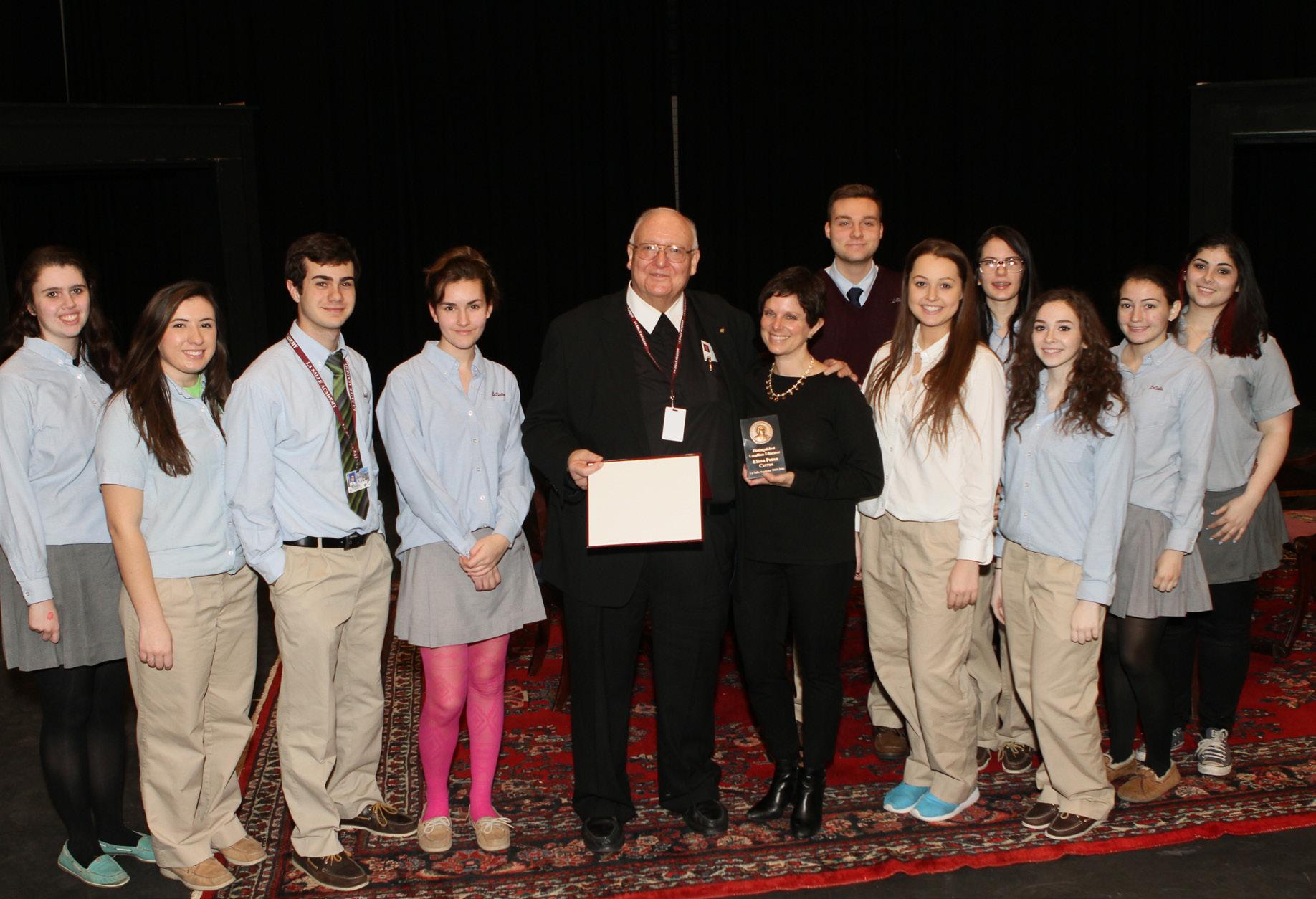
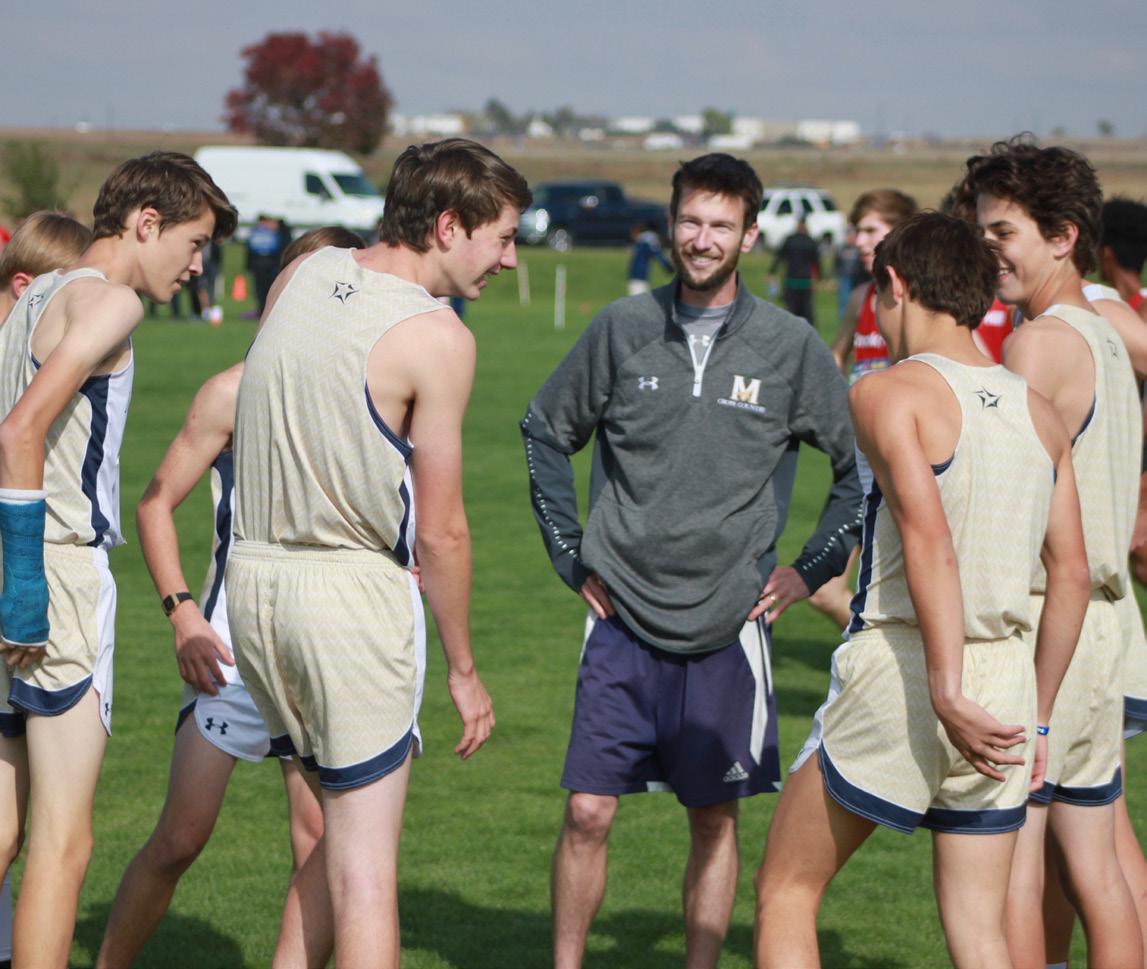 Joe Welling, dean of students and cross country coach at Mullen High School, gathers his team before a meet. Courtesy Joe Welling
Elissa Pensa Cerros and her class at La Salle Academy, Providence, celebrate after she received a Distinguished Lasallian Educator award from the District of Eastern North America. Courtesy Andrew Lagace, La Salle Academy, Providence
Joe Welling, dean of students and cross country coach at Mullen High School, gathers his team before a meet. Courtesy Joe Welling
Elissa Pensa Cerros and her class at La Salle Academy, Providence, celebrate after she received a Distinguished Lasallian Educator award from the District of Eastern North America. Courtesy Andrew Lagace, La Salle Academy, Providence
“When I began working at La Salle Academy I had no way of knowing the ways my life would become so enmeshed in the Lasallian mission,” said Elissa Pensa Cerros, chairperson of the visual and performance
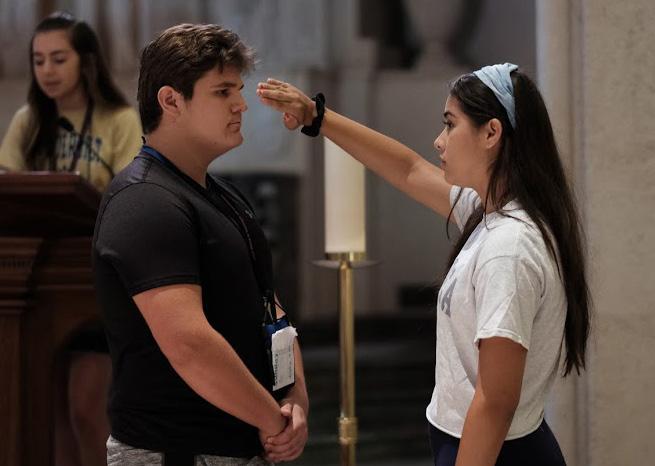
arts department at La Salle Academy in Providence, Rhode Island. “The language of the Lasallian charism has become the foundation point from which we explore the arts together in my classes and my outreach program. It is in this mission that I have found my vocational call. The idea of helping all individuals—no matter where they come from or what their circumstances—realize their potential is a part of the mission that I carry into my role as a mother. I am forever grateful.”
Whether as a Brother, teacher, social worker, tutor, coach, campus minister, volunteer or through numerous other roles, each person provides an essential service to build up the community and share in serving the young entrusted to our care.
EXTENDING THE INVITATION
Our community is called together as individuals associated for mission. Continuing to invite others to share in this charism and mission will allow the mission to deepen and grow as we respond to the needs of today.
“The topic of Lasallian vocation is important for a number of reasons,” said Kenenna Amuzie, director of Young Lasallians for the District of San Francisco New Orleans. “We are uniquely poised as an Institute, founded on the
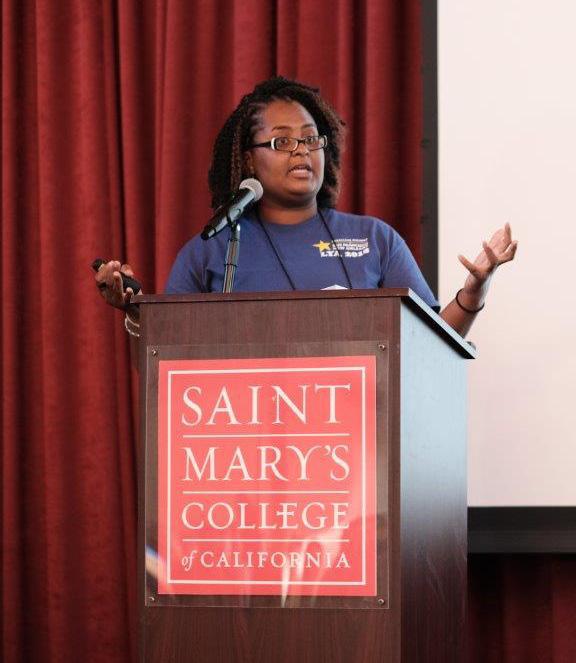
premise of responding to the signs of the time with eyes of faith, to have a richer understanding of what it means to live out our mission and charism together and by association in the world today. This understanding, rooted in the past and responding to the present, can shape the future of the Lasallian family’s ongoing response to provide a human and Christian education for the young, especially the poor. A response that we can live out as Brothers, Lasallian Partners, volunteers and in a multitude of ways connected to the Lasallian mission.”
It is in exploring a multitude of ways to serve in the Lasallian mission and extending the invitation to others that we can answer the question, “Whom am I called to serve?” •
Chris Swain is the director of the Office of Lasallian Vocation Ministry at Christian Brothers Conference.
QUESTIONS FOR REFLECTION
1. How do you answer the question of “Whom am I called to serve?”
2. What role does community play for you in living out your Lasallian vocation?
3. How can you invite others to explore their vocation in the Lasallian mission?
Students connect during the weeklong summer Lasallian Student Leaders program inviting students to deepen and integrate the Lasallian core principles into their lives and gain practical skills to better serve and lead when they return to their campus communities. Courtesy District of San Francisco New Orleans
Kenenna Amuzie addresses students at the District of San Francisco New Orleans 2018 Lasallian Student Leaders gathering. Courtesy Simon Kim, Cathedral High School, Los Angeles
TODAY




 A MAGAZINE FOR THE LASALLIAN FAMILY IN THE LASALLIAN REGION OF NORTH AMERICA
A MAGAZINE FOR THE LASALLIAN FAMILY IN THE LASALLIAN REGION OF NORTH AMERICA


 BOB CARREJO
BOB CARREJO
 ANNA WADDELOVE
CHRIS SWAIN
ANNA WADDELOVE
CHRIS SWAIN























 (Left) Brother Michael Fehrenbach, FSC, celebrated his 50th jubilee in 2015. Courtesy Brother Michael Fehrenbach, FSC
(Below) Catalyst students arrive back to school after a field trip. Courtesy Brother Michael Fehrenbach, FSC
(Left) Brother Michael Fehrenbach, FSC, celebrated his 50th jubilee in 2015. Courtesy Brother Michael Fehrenbach, FSC
(Below) Catalyst students arrive back to school after a field trip. Courtesy Brother Michael Fehrenbach, FSC

 Marilyn Paquette, second from left, is the founding principal of De La Salle Academy in Concord, California. Courtesy Brother Lawrence Haley, FSC, De La Salle Academy, Concord
Dr. Angel Gonzalez, pictured with his eighth grade American Studies students, now teaches at his alma mater. Courtesy Soobin Lim
Marilyn Paquette, second from left, is the founding principal of De La Salle Academy in Concord, California. Courtesy Brother Lawrence Haley, FSC, De La Salle Academy, Concord
Dr. Angel Gonzalez, pictured with his eighth grade American Studies students, now teaches at his alma mater. Courtesy Soobin Lim











 BY BROTHER TOM JOHNSON, FSC
BY BROTHER TOM JOHNSON, FSC



 BY MARYANN DONOHUE-LYNCH
BY MARYANN DONOHUE-LYNCH


 Participants of the 2017 Women’s Symposium in Auckland, New Zealand, from the Lasallian Region of North America stand with Brother Superior General Robert Schieler, FSC, back center. Courtesy Maryann Donohue-Lynch
Participants of the 2017 Women’s Symposium in Auckland, New Zealand, from the Lasallian Region of North America stand with Brother Superior General Robert Schieler, FSC, back center. Courtesy Maryann Donohue-Lynch




 Joe Welling, dean of students and cross country coach at Mullen High School, gathers his team before a meet. Courtesy Joe Welling
Elissa Pensa Cerros and her class at La Salle Academy, Providence, celebrate after she received a Distinguished Lasallian Educator award from the District of Eastern North America. Courtesy Andrew Lagace, La Salle Academy, Providence
Joe Welling, dean of students and cross country coach at Mullen High School, gathers his team before a meet. Courtesy Joe Welling
Elissa Pensa Cerros and her class at La Salle Academy, Providence, celebrate after she received a Distinguished Lasallian Educator award from the District of Eastern North America. Courtesy Andrew Lagace, La Salle Academy, Providence





